

These pages have taught me mountains of things, and I've been amazed and shocked innumerable times as well. One thing that really surprised me was the vast amount of people and nations that fought together for one cause. The diversity of human beings all brought together by an age old dream: freedom. Not the artificial 'freedom' that has been GRANTED to us by our rulers. But true freedom, as free as human beings can be in a civilization, at least.
The bottom line is no matter who you are, whatever race, culture or religion you call your own, there is one basic desire that has always united men: to be left alone to live in peace. In the 'multicultural' mess that our countries are in today, we will never find that peace. Only chaos. Hate. Confusion. Unrest. And an empty feeling in the pit of our beings.
'A searing pain runs through this age and the agony can no longer be borne.
An emptiness that is often expressed through rage. We live in an artificial society that is devoid of truth and purpose. Our only goal is to serve the rich and falsely powerful and continue to oil the great machine which enslaves us. White, black, red or yellow, your blood, sweat and tears are all the same -- and equally irrelevant, to the perverse masters of this world. Man or woman -- you are meat. Our enemies do not need to come and kill us, we eagerly kill ourselves and each other. Our hate is misplaced. Our instincts muddled.
Our entire cultures are being destroyed, replaced by a horrid mix of modern insanities. Man and woman have lost their traditional roles. The Enemy has convinced the woman to care more about herself than her husband and family. Her children are monsters whose heads are filled with television rot and Hollywood brainwashing. She's more worried about her endless pursuit of vanity, fashion and feeding her egoism. Her spirit is empty. No longer the spiritual rock of her family. She is a clown. High fashion is her clown costume, her make-up a frowning clown face. Plastic surgery grotesquely distorts her, she is dizzied with the deathly whispers of her enemy. The Destroyer's poisons course through her cold veins. His sickly murmurs of submission she proudly obeys.
But she is not alone in her journey. Nor is the male less guilty. He now pays the price of decades of sloth. He thought himself king of the mountain - a fat, lazy lion sunning himself without a care. Resting on the laurels of his ancestors, he was far removed from the blood and sweat paid by those before him. He let the enemy into his home. He let the opinions of magazines and television supersede his own. They ate away at the foundation of his home while he was distracted by sports and the empty hunger for wealth. He watched the poisons work away at his family. He faced these dangers with selfishness, uncaring and anger.
His children live not in the world of their ancestors, but in a world designed to destroy them. The family has been annihilated from within. The enemy knew: destroy the woman, the wife, the mother, and all else will follow. She was the heart. That heart has sputtered to a stop.
'Out of the corruption of women proceeds the corruption of races;
Today, in these last days, man throws his hands up in confusion, seemingly powerless to put the pieces back together. He offers the woman flowers instead of direction. Sex instead of strength. And materialism instead of loyalty and stability.
He is not the leader, but a follower of the same master as she. He offers her nothing she doesn't already know, they are virtually the same being, each have exchanged their age-old roles. Man trading his masculinity for femininity, and vice versa.
He curses her for being so superficial, so empty, so mundane, so driven by the trivialities of the day. And she despises his weakness, his anger, his lack of leadership, his absence of manliness. She no longer respects him.
Her womb is open for the taking. Thousands of years of blood washed away. The enemy echoes the poisonous words of 'her choice'. Women's rights -- women's liberation, are in fact the opposite of these deathly phrases. There was nothing to be liberated from. She is stabbed in the back by sharp words that enslave her.
And where is the 'man' while she auctions off her bloodline? He's at a sports bar, screaming at a television screen as his heroes bounce a ball or make a touchdown. He and his 'bros' fill entire stadiums to watch an inconsequential game. If only he put even half of that energy and fervor into caring about his people, his family, the children of the future.
It's madness spinning out of control. Over half of marriages end in divorce in the U.S.A.! This insanity began long before any of us were alive. How many more generations will be born into this toxic madness?
We must never forget, all of this is a part of a plan to destroy us. All of us. A plan to subjugate and enslave all races.
One man stood up against this tide of darkness. He restored the family. He led them back to their healthy, sustaining traditional roles. He resurrected man and woman. Marriage once again became a sacred bond.
'There are two ways of judging a man's character.
We could also say the same thing in reverse. In light of this wisdom, a terrible judgment awaits them both. But alas, luckily all is not lost. We have Adolf Hitler to guide us out of this mess. His spirit rises, resurrected by the love of the faithful.
Let's move on to a superb speech Adolf Hitler gave to women of the National Socialist Women's League on September 8, 1934:
There is a common clamor for a savior, and the crucified are everywhere.
...That salvation will come out of suffering and grace out of despair,
that there will be daylight again after this horrific darkness...'
-Hermann Bahr, essayist and critic, in the literary magazine 'Moderne Dichtung', January 1, 1890
out of the corruption of races, the loss of memory;
out of the loss of memory, the loss of understanding, and out of this all evil.'
–Bhagavad Gita [1:41]
By the woman he marries and the way he dies.'
-Adolf Hitler
'The slogan 'Emancipation of Women' was invented by Jewish intellectuals and its content was formed by the same spirit. In the really good times of German life the German woman had no need to emancipate herself. She possessed exactly what nature had necessarily given her to administer and preserve; just as the man in his good times had no need to fear that he would be ousted from his position in relation to the woman.
In fact the woman was least likely to challenge his position. Only when he was not absolutely certain in his knowledge of his task did the eternal instinct of self and race-preservation begin to rebel in women. There then grew from this rebellion a state of affairs which was unnatural and which lasted until both sexes returned to the respective spheres which an eternally wise providence had preordained for them.
If the man's world is said to be the State, his struggle, his readiness to devote his powers to the service of the community, then it may perhaps be said that the woman's is a smaller world. For her world is her husband, her family, her children, and her home. But what would become of the greater world if there were no one to tend and care for the smaller one? How could the greater world survive if there were no one to make the cares of the smaller world the content of their lives? No, the greater world is built on the foundation of this smaller world. This great world cannot survive if the smaller world is not stable. Providence has entrusted to the woman the cares of that world which is her very own, and only on the basis of this smaller world can the man's world be formed and built up. The two worlds are not antagonistic. They complement each other, they belong together just as man and woman belong together.
We do not consider it correct for the woman to interfere in the world of the man, in his main sphere. We consider it natural if these two worlds remain distinct. To the one belongs the strength of feeling, the strength of the soul. To the other belongs the strength of vision, of toughness, of decision, and of the willingness to act. In the one case this strength demands the willingness of the woman to risk her life to preserve this important cell and to multiply it, and in the other case it demands from the man the readiness to safeguard life.
The sacrifices which the man makes in the struggle of his nation, the woman makes in the preservation of that nation in individual cases. What the man gives in courage on the battlefield, the woman gives in eternal self-sacrifice, in eternal pain and suffering. Every child that a woman brings into the world is a battle, a battle waged for the existence of her people. And both must therefore mutually value and respect each other when they see that each performs the task that Nature and Providence have ordained. And this mutual respect will necessarily result from this separation of the functions of each.
It is not true, as Jewish intellectuals assert, that respect depends on the overlapping of the spheres of activity of the sexes; this respect demands that neither sex should try to do that which belongs to the sphere of the other. It lies in the last resort in the fact that each knows that the other is doing everything necessary to maintain the whole community...
So our women's movement is for us not something which inscribes on its banner as its program the fight against men, but something which has as its program the common fight together with men. For the new National Socialist national community acquires a firm basis precisely because we have gained the trust of millions of women as fanatical fellow-combatants, women who have fought for the common life in the service of the common task of preserving life, who in that combat did not set their sights on the rights which a Jewish intellectualism put before their eyes, but rather on the duties imposed by nature on all of us in common. Whereas previously the programs of the liberal, intellectualist women's movements contained many points, the program of our National Socialist Women's movement has in reality but one single point, and that point is the child, that tiny creature which must be born and grow strong and which alone gives meaning to the whole life-struggle.'
[Above: The poster says: 'Hans writes that his division is arriving at...' and 'Shh, the enemy also hears'.]
[Above: There is something beautiful about this old picture. I guess it says it all.]
[Above: 'Allgemeiner Wegweiser für jede Familie' (General Guide for Every Family), April 19, 1939]
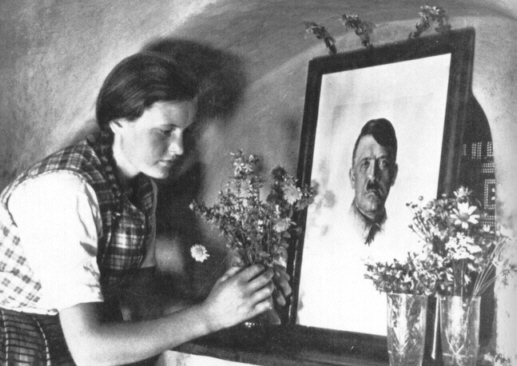
[Above: 'Die Woche' (The Week), April 20, 1938.]
[Above: The bust of Adolf Hitler in the Norwegian Storting (the Storting is the Norwegian Parliament), 1944.]
[Above: A BDM girl shows off a giant ceramic Adolf Hitler bust.]
'The woman has her own battlefield. With every child she brings to the world, she fights her battle for the nation. The man stands up for the Volk, exactly as the woman stands up for the family.'
[Above: A tired soldier falls into the warm, healing embrace of a woman. This painting is by Hans Adolf Bühler and is called 'Heimkehr' (Homecoming).]
[Above: Blessed, glorious Adolf Hitler.]
[Above: Klara Hitler. Click to see more.]
[Above: Adolf Hitler visits Klara's grave on March 13th, 1938, Leonding, Austria.]
'In my state the mother is the first citizen.'
[Above: The 'Cross of Honor of the German Mother', awarded to mothers who had eight or more children. In the Third Reich motherhood was a cherished and noble act. This award came in three classes: bronze (4-5 children), silver (6-7 children) and gold (8 or more). But this award was more than just an empty gesture. The famous newspaper Völkischer Beobachter (People's Observer) in 1938 stated:
[Above: A proud mother and father with children. Strong families with traditional values were highly encouraged and rewarded in National Socialist Germany -- contrast that with today's single parent degenerate family. Note the mother is wearing a Mother's Cross around her neck. She also wears the membership pin of the National Socialist women's organization 'NS-Frauenschaft'.]
[Above: A Mother's Cross award ceremony. Note on the table are Mother's Crosses sitting on the award packets they came in (the Gold Class came in boxes), alongside award documents that also were presented with each cross.]
[Above: 1937 cancels extolling the virtues of motherhood from the Winterhilfswerk (Winterhilfswerk des Deutschen Volkes, or Winter Relief of the German People).]
Adolf Hitler radiated strength, wisdom and manliness, and women sensed this. When Adolf Hitler was jailed in 1923 he remarked that it was women who 'sustained the movement'. It's also no secret that it was women who voted him into power in 1933. Those same women never gave up on him. They stuck with him until the apocalyptic end. They believed in him. They eagerly gave him their sons, brothers, husbands and fathers. They trusted that their lives would not be wasted and their deaths not in vain.
[Above: Adolf Hitler in the rain with women and children. Leon Degrelle tells us of a time when Adolf Hitler was driving through the rain and saw a man walking without a coat. He stopped the car, got out and gave the man his own coat. That was the type of man he was.]
Women 'held down the fort' while Germany was emptied of men who were giving their all to save the world from tyranny. Women joined the workforce, filling the empty spaces that men once held. They worked in factories. They worked in all branches of the military; Wehrmacht, Luftwaffe, Kriegsmarine, SS and nearly all other spheres of paramilitary, government and civilian organizations. Women operated crucial communications lines, anti-aircraft defenses, served as air raid officials and even as firemen.
[Above: Adolf Hitler and his sister Paula with an unknown little girl. Adolf Hitler possessed a genuine love for children. He knew that they were the future. A future that he so desperately fought for.]
[Above: Free of usury, greed and the sinister plot to destroy them.]
Children were embraced by the totality of the society. To combat the deadly declining birth rate, women were encouraged to have large families.
[Above: Adolf Hitler gave children back their families.]
[Above: Adolf Hitler gave children back their innocence.]
[Above: Postage stamp showing Adolf Hitler and child, 1940. This stamp celebrates Adolf Hitler's 51st birthday.]
'Women are the eternal companions of men in work and battle.'
[Above: This early NSDAP poster was aimed toward women voters: 'We Women Are Voting Slate 2 National Socialists.']
[Above: An election poster appealing to mothers.]
[Above: Poster appealing to women.]
[Above: Another poster appealing to women: 'German Women think of your children - choose Hitler']
Women voted astoundingly on Adolf Hitler's side. Check out the pictures below, taken from a period New York newspaper.
Adolf Hitler once said: 'I left jail after thirteen months imprisonment to find women had sustained the movement.
[Below: Never had a people been so solidly behind any leader. So loved was he, that it endures to this day. Except today that love is not only held by Germans, but by people everywhere.]
[Below: Women adored Adolf Hitler for much the same reasons which men admired and loved him: he gave them back their futures. In the twelve short years that Adolf Hitler was in power he revitalized Germany. He freed the people from the bondage of debt slavery. He gave them back their pride and most of all he gave them hope for something better. They knew under him all things were possible. For the first time he was a leader who came from the people, who loved the people, who WAS the people. As they said 'Adolf Hitler is Germany, Germany is Adolf Hitler']
[Below: A woman votes for Adolf Hitler from her hospital bed.]
[Below: There were in fact many women who attended early rallies, despite the danger of violence from communist attacks. On the far right is Reichstag Deputy Wilhelm Frick, next to him stands Margaret, his wife.]
[Below: Flag dedication/consecration ceremony of the local NSDAP party in Trier, Germany, June 12, 1932.]
Modern writers, opponents of National Socialism, even admit that Germany under National Socialism was a 'social revolution' (David Schoenbaum).
[Above: Teacher, harvester, doctor and scientist.]
[Above: Assembly worker, mailwoman, courier and secretary.]
[Above: Designer, switchboard operator, aircraft assembly and children's services.]
[Above: Nurse, Red Cross assistant, seamstress and railroad signaler.]
[Above: Railroad conductors.]
[Above: Here is a period graph showing men and women's age progression in education and the workforce. Click to enlarge and see translation.]
'I also expect the German woman to exemplify the most extreme discipline in this great fighting community!'
[Above: My kind of caterer. This caterer is surrounded by hungry Hitler Youth boys and other children, who are eager for a piece of cake celebrating Adolf Hitler's birthday.]
[Above: Dr. Bertha Karli who specialized in physics and mathematics.]
[Above: Women who belong to the BDM organization 'Faith and Beauty'. Here you see girls studying fashion design.]
[Above: Two girls designing - what I can only guess to be - stockings.]
[Above: A page from a German fashion magazine from the period.]
[Above: A 'racy' photo to warm a soldier's heart on the front from Signal Magazine.]
[Above: Two models during a Vienna fashion week, 1940.]
[Above: National Socialist chic.]
[Above: A beauty from the pages of a period German magazine.]
[Above: Aryan archetype.]
[Above: Woman working in a factory assembly plant.]
[Above: Woman working in a factory assembly plant.]
[Above: Woman working in a factory assembly plant.]
[Above: Woman working in a Luftwaffe plant.]
[Above: Women working in a laboratory in the Hamburg Institute for Hygiene (Hamburger Hygienischen Instituts), 1937.]
[Above: The German company Siemens developed a 'super microscope' to see the Polio virus for the first time. Note the female lab assistant. This article is from the 'Berliner Illustrierte Zeitung' (number 19, May 13, 1943).]
[Above: 'Here, canned vegetables are being examined so that the bacteria contained in them may be counted. Experiments on related concoctions are conducted in order to observe how many of the seeds remained sustainable.' (Signal magazine, April 1943, Greek edition, special thanks to Dimitris for the translation!)]
[Above: Dr. Hainroth, a zoologist.]
[Above: A group of female archeologists and assistants.]
[Above: This Novemeber 1941 magazine, called 'Allgemeiner Wegweiser für Jede Familie' (General Guide for Every Family) says:
[Above: Music, theater and the arts.]
[Above: A woman in a shooting competition (holding a P08 Luger pistol).]
[Above: A female chess tournament in Hitler's Germany? Wait, but I thought women weren't allowed to leave the kitchen? This article is from the 'Berliner Illustrierte Zeitung' (number 37, September 16, 1943).]
[Above: The Illustrated Cologne Newspaper (Kölnische Illustrierte Zeitung) showing a woman welding, February 1940.]
[Above: NS-Frauen-Warte magazine showing a woman working in an armaments factory, 1944.]
[Above: Seamstresses sewing National Socialist flags.]
[Above: Seamstresses sewing National Socialist flags.]
[Above: A seamstress preparing pieces of flags to be sewn.]
[Above: Seamstresses hanging out pieces of flags to dry after being silk screened.]
[Above: A recycling center in 1939. Germany was a pioneer in the recycling movement. American correspondent Lothrop Stoddard wrote in October 1939:
[Above: Women painting busts of Adolf Hitler]
[Above: A spectacular German book from 1941 (click the image to see the 100 pages within!) detailing the immense contribution of National Socialist women in the workplace:
[Above: French version of Der Adler (The Eagle) magazine, January 12, 1943. Within its pages is a special article on women in the workplace training in technology. Below are pictures and translations from the article.]
[Above: 'L'instruction générale des électro-assistantes commence avec un cours de base d'environ neuf mois, pendant lesquelles les jeunes filles completent leurs connaissances scolaires en mathématiques, physique, électro-technique, et dans la technique des mensurations'
[Above: 'Les notions apprises sont contrôlées et approfondies au cours de manipulations pratiques. Sous la direction du professeur, de petits groupes de travail entreprennent même des constructions expérimentales'
[Above: 'Pendant l'instruction théorique et scolaire, les jeunes filles apprennent à limer, à fraiser,
à souder et à bobiner, et bien d'autres choses encore. Au cours de leurs travaux plus tard, c'est sans difficulté
qu'elles sauront se tirer toutes seules de petites difficultés pratiques. Et ce n'est pas un mal, si la jeune demoiselle de l'image d'en bas se rend ellemême compte que le travail manuel
précis n'est pas si simple que celà
'
[Above: 'Lorsqu'un domaine spécial a été étudié à fond en théorie, les connaissances sont complétées en passant en revue
les instruments et appareils du laboratoire correspondant'
[Above: 'Si l'instruction générale est terminée, commence l'instruction spécialisée, qui méne tout droit vers le travail
futur. L'assistante stagiaire de l'image supérieure effectue par example pour la premiére fois toute seule des
mensurations'
[Above: 'Plusieurs assistantes ont un ingénieur de laboratoire expérimenté comme "patron", qui travaille avec elles
lors d'expériences importantes'
[Above: 'Au cours du travail au laboratoire se révèle bien rapidement à quel point l'instruction pratique a été
utile. C'est sans difficulté que l'assistante peut construire un appareil de mesure'
[Above: Here are two ads advertising a brand called Ellocar (Nacht Creme = Night Cream). Ellocar was a brand from Düsseldorf, Germany. The add on the left from the Berliner Illustrirte Zeitung, October 10, 1940, nummer 41.]
[Above: Police eagle]
[Above: A woman working with the police directing traffic.]
[Above: A group of women working for the police.]
[Above: A studio image of a girl working for the police.]
[Above: This postage stamp, from May 1944, shows a female letter carrier.]
[Above: This is from a postcard showing women of the Reichspost celebrating a new series of postage stamps showcasing women in regional dress, 1936.]
[Above: These postage stamps were issued on October 4, 1935 and were used until June 30, 1936. They were engraved from photographs by H. Retzlaff. The surcharge on these stamps went to charity. The first stamp of 3+2 represents East Prussia (Ermland) and Marienburg, 4+3 Upper Silesia (Rossberg near Beuthen, 5+3 Wine Grower from the Rheinland (Rudesheim Castle), 6+4 Lower Saxony (Schaumburg-Lippe and Lower Saxony court yard), 8+4 Kurmark (Lower Lusatia) Heinersbruck in Spreewald, 12+6 Black Forest (landowner Anna Zwick, Gutachtal) and Black Forest house, 15+10 Hessen, Marburg traditional dress (Lower Asphe), 25+15 Upper Bavaria (Bayrischzell, Miesbach traditional celebratory dress), 30+20 Friesland (Foehr Island), houses, Watt, 40+35 Upper Franconia (Bridesmaid from Effeltrich).]
[Above: This is a rare and adorable cancel advertising a stamp show. It says:
[Above: A mailwoman with the Reichspost on a bicycle.]
[Above: A BDM girl assisting a Reichspost mailwoman.]
[Above: A very pretty mail carrier!]
[Above: The Reichspost seemed to be filled with beauties.]
[Above: My mail carrier looks nothing like this, that's for sure.]
[Above: RLB poster. Click the image to see a variation.]
[Above: RLB member wearing distinct 'gladiator' style helmet.]
[Above: Two RLB girls.]
[Above: A group of women in a fire brigade.]
[Above: 1st Class Fire Brigade decoration.]
[Above: A group of RLB girls help one another strap on their helmets.]
[Above: Another group of RLB girls help one another strap on their civilian model gas masks.]
[Above: A group of female firefighters. Check out the girl in the front wearing heels!]
[Above: A group shot of firefighters.]
[Above: Five firefighters in front of their fire truck.]
[Above: Firefighters with gas masks holding water hoses.]
[Above: On the belt of this RLB girl you can see the filter of a gasmask and flashlight.]
[Above: This girl serves as an air raid warden in Berlin. She has a civilian style gas mask around her neck.]
[Above: A woman working for the RLB fits gasmasks for children.]
[Above: Postage stamp set issued in 1937 honoring the RLB.]
[Above: Postcard utilizing the same art as that above. This prepaid postcard has been upfranked (additional postcage of 1 pfennig {penny} was printed next to the original postage of 5 pfennig). It says:
'Die Deutsche Briefmarke
[Above: 1934 RLB lottery ticket. Click the image to see more lottery tickets from the Third Reich!]
[Above: RLB recruiting poster.]
In December 1935, on the 100th anniversary of the German railway system, Adolf Hitler declared that it was 'the most progressive transportation enterprise in the world.'
[Above: I'm suddenly a train enthusiast!]
[Above: A woman with the Reichsarbeitsdienst (RAD, Reich Labor Service) punching tickets. Below the 'RAD' on her armband you can see the words 'Kriegshilfs...' or 'war help'.]
[Above: 'Unser Deutsch Reichsbahn' or 'Our German Reich Railway'. This image was done by 'Würbel'.]
In 1933, the year Adolf Hitler became chancellor, a diesel powered train called the DRG Class SVT 877 Hamburg Flyer - also known as the 'Flying Hamburger' - was put into operation. It was the fastest regular railway connection in the world.
[Above: This amazing photograph is of Ilse Hanauer, Adolph Koch and Frieda Teske-Hanauer on a Berlin train, 1938. The 'D R' stands for Deutsches Reich.]
[Above: A Reichsbahn employee. She is holding a railway guide to Southwest Germany.]
[Above: Same woman as the picture above -- her arm patch says 'RBD Stuttgart'.]
[Above: Same woman as in the pictures above.]
[Above: Reichsbahn arm patch -- this patch was for the Saar line, but is otherwise identical to the woman's patch above.]
[Above: Reichsbahn collar patch -- you can see this on her collar.]
By 1935 the Reichsbahn railway network had a total of 68,728 kilometers of line (that's about 42,705 miles for us Americans).
[Above: Girls from the NSRL - note the patch on their chest is the eagle design of that above.]
The NSRL was led by three individuals from 1933-1945, bearing the title of Reichssportführer. The leaders were:
Arno Breitmeyer (1943–1944)
Karl Ritter von Halt (1944–1945)
[Above: Hans von Tschammer und Osten]
Herr von Tschammer wished to use sports to improve the nation's physical health and well-being. He was extremely talented in the area of theatrics, staging massive events of sports pageantry that showcased aesthetic beauty.
During the 1936 Olympic Games von Tschammer's talents shined. His role was revolutionary, carefully crafting and coordinating the historic event. It was the first Olympic Games to feature live television coverage and featured many innovative improvements still in use today, such as the Olympic torch relay.
[Above: An Olympic advertisement showing Hans von Tschammer and Adolf Hitler]
Hans von Tschammer adopted a unique version of the eagle and swastika for the NSRL and made "Heil Hitler" the official salutation for members of the organization in December 1936.
[Above: NSRL membership book]
The NSRL continued throughout the war years, although its funding and prestige was obviously stunted a great deal. Nonetheless, von Tschammer continued to use the NSRL to instill in his people a sense of pride and unity.
March 25, 1943 proved to be a dark day in German history. The devoted, capable and visionary Hans von Tschammer und Osten died of pneumonia in Berlin. A man of ideals and of the people, his assets left behind were few for a man of his high position.
[Above: Hans von Tschammer und Osten's State funeral on March 29, 1943.]
Things would never be the same. The war situation grew darker and sports came to a near standstill.
After the war the NSRL was banned and deemed an evil 'Nazi' group like all the others.
After all, sports were to be used to brainwash people, not enrich and unite them, according to the Allies. The NSRL was deemed dangerous, just look at Paragraph 2 of the DRL's Statutes:
'The purpose of the League of the Reich for Physical Exercise is the training of the body and character of Germans grouped together in member organizations through planned physical exercises and care of the national conscience (Volksbewußtsein) in the spirit of the National Socialist state.'
Despite this, like mountains of other things, the Allies could not deny the creative genius present in the NSRL. Its ideas and structure had great influence of sports organizations worldwide and are used to this day.
[Above: Athletics were an important part of National Socialist Germany. Here is a postcard advertising a sporting event from very late in the war -- 1944.
[Above: 1936 two volume Olympia books, one covering the Winter Olympics and the other the Summer Olympics.]
[Above: These books were once owned by Hans von Tschammer und Osten and are addressed to him by Albert Speer, who gave them to von Tschammer in 1936.]
[Above: The opening page of book two.]
[Above: Jesse Owens, who was celebrated by Adolf Hitler's Germany, not scorned as the lying enemies of truth told the world.]
[Above: Light-hearted drawings showing Owens with the three saplings he won at the Olympic Games. The drawing on the right shows Owens fifty years later -- the saplings are now tall trees, and Owens is an old man.]
[Above: A German stone mason chisels Jesse Owens' name into granite. Yet another picture offering proof that the Third Reich and Adolf Hitler celebrated and respected Owens. Would you carve someone's name into granite that you didn't respect? These two books show Owens in a very positive light and celebrate his accomplishments. Once again it was the enemies of Germany who 'snubbed' Owens. President Roosevelt never even congratulated Owens! Owens himself said that Adolf Hitler 'waved at me and I waved back.' Before his death Owens said the stories about Hitler disrespecting him were a lie.]
[Above: 'Olympiades' statue by Joseph Thorak.]
Leni Riefenstahl was commissioned by the German Olympic Committee to film the Games. The result was an artistic masterpiece entitled Olympia. This film pioneered many techniques that are now widespread in the filming of sports.
Germany dominated the games, winning 89 medals total, with the United States coming in second with a mere 56 medals. A people united proved to be unstoppable.
[Above: Olympic coliseum in Berlin.]
Germany introduced the torch relay that is used today, pioneering transporting the flame via a relay system from Greece to the Olympic venue. The games were also the first to have live television coverage, a massive technological leap.
Adolf Hitler opened the games with a short speech which reached 41 countries across the planet (this was made famous in popular culture by astrophysicist Carl Sagan in his book (and later a film) 'Contact'. The signal used was of such strength that it quite possibly could be the first signal an alien race would encounter in outer space. Adolf Hitler's divine voice, flying through infinity like a bolt of truth. What better a way to say 'We're here'?!
[Above: Female Olympic athletes during a victory ceremony, in the center of the platform is Tilly Fleischer, gold medallist for Germany in the women's javelin.]
[Above: 1936 German Olympic Games Breast Cross medal, 2nd Class (a rare medal, there were only 3,364 of these awarded). This award was not for athletes of the games, but in recognition of those that made the games happen, behind the scenes.]
[Above: Watch 'Gesunde Frau - Gesundes Volk'
[Above: Postage stamp from June 1944 featuring a RADwj maiden.]
[Above: A beautiful RADwj maiden. Some lunatic has blurred out the swastika on the patch on her sleeve.]
[Above: Note the 'XI' patch on the girl above. There were many different groups within the RADwj. Here is an example of an 'XXVIII' patch.]
[Above: Her brooch pin says 'Reich Labor Service' at the top and 'Female Youth' on the bottom.]
[Above: Reich Labor Service poster.]
[Above: Women at a female RADwj camp salute the flag of freedom.]
From 1935 and onwards the men and women of the RAD were mobilized to work. Railroads, canals, building projects and the Autobahn (highway system) were amongst just some of Adolf Hitler's visions.
The government even halted the introduction of some varieties of machinery which would replace men in the workplace. Government contracts went to the companies which relied on manual labor instead of machines. Employers had to seek government permission before they could reduce their work force.
[Above: RADwj women wearing issue exercise shirts.]
Two days after becoming Chancellor, Adolf Hitler spoke to the anxious nation by radio:
'The misery of our people is horrible to behold! Along with the hungry unemployed millions of industrial workers there is the impoverishment of the whole middle class and the artisans. If this collapse finally finishes off the German farmers we will face a catastrophe of incalculable dimension. For that would be not just the collapse of a nation, but of a two-thousand-year-old inheritance of some of the greatest achievements of human culture and civilization...
[We will]
'achieve the great task of reorganizing our nation's economy by means of two great four-year plans. The German farmer must be rescued to maintain the nation's food supply and, in consequence, the nation's vital foundation. The German worker will be saved from ruin with a concerted and all-embracing attack against unemployment.'
'Within four years unemployment must be decisively overcome... The Marxist parties and their allies have had 14 years to show what they can do. The result is a heap of ruins. Now, people of Germany, give us four years and then pass judgment upon us!'
[Above: (right) German Womens Labor Service achievement brooch. The German text, written in old German Sütterlin, says: 'Arbeit für dein Volk - Adelt sich selbst; Deutscher Frauenarbeitsdienst' (Work for your people - ennoble yourself; German Womens Labor Service). (left) Another women's brooch, this one would be worn by a woman with the rank of maidenführer, between the ages of 18 and 22.]
Within a mere three years unemployment was no more and Germany's economy was flourishing.
It was a government for the people, finally. Adolf Hitler did everything he could to ease the burdens of the common man. He increased the hourly wage, raised overtime pay and enormously improved working conditions. Safety in the work environment and the health of the workers now became law. But Adolf Hitler went even further than this -- he had canteens built with subsidized hot meals, also exercise areas and athletic fields, parks and recreation areas, government and employer paid theater and music performances were introduced, art exhibitions, sports groups and hiking teams along with cultural activities of all kinds. Furthermore, adult education classes were offered, and the Strength Through Joy program offered subsidized vacations to foreign countries.
[Above: This RADwj postcard is called 'Freizeit' (leisure).]
The benefits went on and on. National health care programs were revamped and expanded. Old age insurance and interest-free loans were offered.
The men and women of the Reich Labor Service (RAD) were at the forefront of this national rejuvenation and resurrection.
[Above: This poster, bearing the words 'Hilf auch Du mit!' basically says 'You also help!']
[Above: This postcard bears a pastel work entitled 'Work Maiden in the Hay' by Bernhard Wichert.]
[Above: Cover of the magazine Die Woche, showing an illustration of a girl helping with the harvest, July 1944.]
[Above: This is a RADwj women's brooch.]
[Above: Robert Ley. Click on the picture to see more.]
[Above: German Labor Front poster.]
DAF represented the interests of the workers and the employers. It set high wages for all workers, gave work security and gave workers protection against being dismissed or fired. Additionally, a progressive social security program was born. DAF made the work environment not only safer than ever before, but also began workplace programs such as canteens which supplied healthy food and drink, work breaks, and scheduled work times and high overtime pay. Alas, the worker was protected, valued, and was not just a tool for the rich to get richer.
[Above: DAF girl with an exercise ball. Like numerous other National Socialist organizations which stressed a healthy body, the DAF helped initiate a large spread exercise movement in Germany.]
[Above: Music and dance were amongst a handful of things offered and encouraged to people. Here a women's choir practice their skills.]
[Above: The popular Signal magazine showing girls from the Strength through Joy program, 1941.]
Within DAF were a handful of other organizations like:
[Above: A DAF event backed by an orchestra.]
[Above: DAF monument, circa 1935. It says:
(I am a socialist because it seems incomprehensible to me to care
[Above: This lush magazine 'Joy and Work' was released in 1938 by the DAF organ 'International Central Bureau of Joy and Work'. It is printed in color and black and white with many illustrations and pictures promoting Germany to the world on the occasion of the World Congress in Rome, which sixty nations attended. It's text is done in English, German, French, and Spanish.]
[Above: Advertisement within the Joy and Work magazine.]
[Above: Strength through Joy postcard.]
[Above: Poster.]
[Above: Nationalsozialistische Volkswohlfahrt rally. 'Einer für alle, alle für einen' = One for all, all for one.]
[Above: Here is an NSV tinnie, given to those who donated. It says: 'Helft Mutter u. Kind Durch Die NS. Volkswohlfahrt' (Help mother and child through the NS. People's Welfare).]
[Above: Another NSV tinnie, it says: 'Mutter u. Kind
Gau-Parteitag der N.S. Volkswohlfahrt Gau-ost Hannover Juni 1934' (Mother and Child District Party Congress of N.S. People's Welfare District East Hanover June 1934).]
[Above: Here is another NSV tinnie. It says: 'NS Volkswohlfahrt - GAU SACHSEN' (NS People's Welfare -
GAU SAXONY).]
[Above: Here is another tinnie very similiar to the one above. It says: 'N.S. Wohlfahrtsspende für die Mütter Verschickung' (N.S. Welfare donation for the mother's transportation).]
[Above: Erich Hilgenfeldt (July 2, 1897 - April/May 1945 in the final days of Berlin. Click to see more pictures.]
Erich Hilgenfeldt joined the National Socialist party on August 1, 1929 (membership #143642). As NSV leader, he was also the Reichsfrauenführerin (Reich Women's Leader), which made him Gertrud Scholtz-Klink's superior.
[Above: An NSV ten year anniversary article from the magazine 'NS Frauen Warte', issue 17.]
[Above: Nurses of the NSV.]
Hilgenfeldt was a committed National Socialist and had the honor of speaking at the Nuremberg Party Rally of 1936. In his years serving the party and his beloved Germany he earned several other titles and responsibilities. Eager and energetic, on September 9, 1937, he joined the Schutzstaffel (SS - Protective Squadron), becoming member number 289225. In 1939 he earned the rank of Brigadeführer in the Waffen-SS, also earning the rank of Main Office Leader.
[Above: This poster basically says 'Help with the rise of the German Volk' and 'Be a member of the people's welfare'.]
Before his death Hilgenfeldt reached the high rank of Gruppenführer. The circumstances of his death are unknown. Some accounts depict him honorable ending his own life rather than be captured by the communists in Berlin. However, it will probably never be known for sure how this brave and highly capable man died.
[Above: Women of the NSV in front of a regional office.]
The NSV and its many charity programs helped millions in times of joyous light and total darkness. The NSV was an astounding success, and is an eternal monument to Hilgenfeldt's love and sacrifices for his people.
[Above: NSV poster 'Kommt mit in die - Kinderlandverschickung' basically says come shape your child's destiny or future.]
[Above: 1943 stamp celebrating 10 years of the WHW (The Winterhilfswerk des Deutschen Volkes, or Winter Relief of the German People).]
[Above: A graphic honoring mother and children.]
[Above: An NS Frauenschaft membership book housed in a beautiful protector. Click to see inside.]
[Above: NS Frauenschaft membership book.]
The NS-Frauenschaft was led by the extremely likeable and talented Gertrud Scholtz-Klink, who held the rank of Reich's Women's Leader. The organization had a successful and diverse biweekly magazine called the NS-Frauen Warte.
[Above: The NS-Frauenschaft during the opening of the 5th seminar. Dr. Walter Gross, head of the Office of Racial Policy for the NSDAP, is giving a speech.]
[Above: NS-Frauen Warte magazine.]
[Above: Gertrud Scholtz-Klink (February 9, 1902 – March 24, 1999).]
The NS-Frauenschaft was a complex organization whose purpose was very multifaceted, but it all boiled down to a commitment to build a better woman. To instruct her. To guide her. To make her healthy in body and in mind. To give her pride and teach her a vast variety of skills and a plethora of knowledge. It was committed to helping females raise healthy children, who they keenly knew would be the future of Germany.
[Above: NS-Frauenschaft offering a shoe exchange for growing children. This proved to be an extremely smart and popular program.]
The NS-Frauenschaft taught many skills, not just practical, everyday knowledge, but it also taught self-sufficiency. It held classes for all manner of subjects that might aid women -- from schoolgirls to newlyweds and bride-to-be.
It taught pride of country, ancestry and culture, and encouraged women to buy German-made products foremost.
[Above: The NS-Frauenschaft helped young mothers shape their children into respectable, industrious, proud and worthy human beings. A sharp contrast to the monsters churned out today...]
During WWII the women of The NS-Frauenschaft performed a variety of social duties. They gave food and refreshments to soldiers at train stations, they visited the wounded, they held drives to collect scrap metal, clothing and more.
[Above: NS-Frauenschaft women at a train station preparing food for soldiers.]
By 1938 it held a membership of two million women -- the equivalent of 40% of total party membership! Women not only voted Adolf Hitler into office, but never stopped believing in him. They fought with their hearts and souls on the home front, even after the Allied terror bombings destroyed everything around them. They never gave up. Anyone who knows women knows that when a woman believes in a higher belief, she can be amongst the most committed, diligent and unwavering believer. Indeed, many times even more 'extreme' than her male counterpart.
[Above: 1938 poster for the Winterhilfswerk, an aid program of the NS-Frauenschaft. It says: 'A Nation helps itself'.]
[Above: This beautiful artwork, by Wolfgang Willrich, represents one of the main missions of the NS-Frauenschaft perfectly.]
[Above: A beautiful set of paintings. These were done by Karl Diebitsch. The one on the left is entitled 'Mutter', done in 1939 and was displayed in the Haus der Deutschen Kunst. The other is entitled 'I am a Child'.]
[Above: Here are two pages from a 1943 issue of the 'Illustrierter Beobachter' (Illustrated Observer).
[Above: The cover of a beautiful photography book from the Third Reich era titled 'Die Deutsche Kind'.]
[Above: Some pictures from 'Die Deutsche Kind'.]
[Above: One of the most beautiful notes of the Third Reich, this 1942 10 Korun note is from the German Protectorate of Bohemia and Moravia.]
[Above: I was pleasantly surprised when I stumbled upon a picture of the actual girl used for the above note! Someone did an absolutely fantastic job engraving her portrait.]
[Above: Side-by-side comparison.]
The Deutschen Frauenwerk was ultimately headed by the Reichsfrauenführer Gertrud Scholtz-Klink, but had leaders and organizers within all organizations involved. The Deutschen Frauenwerk, a feminine union of positive energy, was composed of nearly two million women.
The organization had a magazine all its own called 'Women's Culture in German Women's Work' which was published from 1935 to 1941.
[Above: Charlotte von Hadeln.]
In the summer of 1930, a group of 31 leaders of the Bund Koenigin Luise visited Italy. There they met with Angiola Moratti, the secretary of Fasci Femminili (a Fascist women's organization), and Maria Pezzé Pascolato, another leader of the Italian group in Veneto.
The Italians took their German comrades to many notable locales, such as the Opera Nazionale Ballila and the Opera Maternità ed Infanzia (the mothers' and children's auxiliaries). But it wasn't until their visit to Rome that the real treat began: a visit with Benito Mussolini!
Charlotte von Hadeln gave a speech to him about the similarities of their ideologies, saying:
'The Fascist women and ourselves feel one thing... the holy will to make every effort to contribute to the future of our children and in full blessings as far as our abilities allow us.'
In the spring of 1934 Charlotte von Hadeln dissolved the Bund Koenigin Luise and advised all of its members to join the Deutschen Frauenwerk or the League of German Girls (BDM), which she herself would later join and become one of its most dedicated leaders.
She wrote in her 1935 autobiography:
'At the time, we still bore the longing for a strong leader of German destiny in our hearts - but now it is fulfilled.'
[Above: Books written by Charlotte von Hadeln.]
[Above: This 1935 Mother's Day pin came in various colors and materials. It says:
'The Red Cross is something like the conscience of the nation. ...Together with the nation, the Red Cross is ready to commit all its strength for the high goals of our leader, Adolf Hitler.'
[Above: 'You give too for the 2nd war relief for the German Red Cross'.]
[Above: German Red Cross worker.]
[Above: This Red Cross sister named Hanny Weber has earned an Iron Cross 2nd class.]
[Above: Two Red Cross sisters who have earned the Iron Cross 2nd Class are showcased here in an article from 'Kriegsbucherei der deutschen Jugend' (War Book of the German Youth), number 89. On the left is Ilse Schulz, who sports an Afrika Korps cuff title, and Grete Fock, who was also a part of the Afrika Korps. They were honored for their outstanding bravery when even during an air raid they stayed in the small surgery tent tending to the wounded.]
[Above: Ernst-Robert Grawitz. Click to see picture in its entirety and others.]
Grawitz was gifted with organizational ability and soon introduced a hierarchical chain of command into the German Red Cross. He breathed new life into the organization and gave it a new sense of pride. With Grawitz at the helm National Socialism was weaved into the organization. Positive change was everywhere. A new Red Cross presidential building, proud and imposing, was to be erected in Potsdam-Babelsberg.
Grawitz summed up his belief that the new German Red Cross should be a 'healthy structure which would fit itself organically into the laws of life in the National Socialist Third Reich'.
During these years the German Red Cross flourished and grew. It came into itself, officially adopting the swastika into its symbol, using the national salute, and presenting National Socialist ideology into its training programs.
[Above: Sisters of the Red Cross take an oath.]
Once war was forced upon Germany the Red Cross began training programs preparing people for air raids, gas attacks and other war related emergencies. It performed joint exercises with local police, fire brigades and paramilitary organizations.
Ernst-Robert Grawitz performed his task admirably. Besides being head of the German Red Cross he was also the Reich Physician of the SS and Police. It is also worth noting that his wife, Ilse, was the daughter of SS-Obergruppenführer und General der Waffen-SS Siegfried Taubert.
[Above: 'Unser treuer kamerad' = 'Our true comrade'.]
[Above: Medical training.]
[Above: A medic in the field treats a soldier's injured leg, somewhere in France.]
In the final sad, but triumphantly beautiful days of WWII, Grawitz was serving Adolf Hitler in the Führerbunker.
What happened next, after he was honorably relieved of his duty, is lost in the mist of history. It is said that Grawitz and his wife and children committed suicide together by exploding a grenade between them, but the truth, like the fate of millions, is unknown. But their sacrifice is known. We shall not forget. We light candles on dark nights for these restless martyrs. We hear their whispers on moon-drenched nights when the world is asleep. We spy their faces in rain-swollen clouds, in empty afternoons wandering. These fallen heroes, golden souls, all, walk with us into the storm. And although their wounds yet bleed, their love has defeated their deaths.
[Above: Left to right: NS-Frauen-Warte magazine, a beautiful portrait of Adolf Hitler on a Red Cross postcard, another stunning Red Cross postcard.]
[Above: Two books by the German Red Cross. 'Das Deutsche Rote Kruz - Jahrweiser 1942' (The German Red Cross
Yearbook 1942) and 'Amtliches Unterrichtsbuch über Erste Hilfe' (Official Textbook on First Aid). Click to see the many pictures inside.]
[Above: Not Red Cross but an interesting medical booklet, entitled 'Die erste Versorgung von Wunden aller Art. Wund-Desinfection' (The first care of wounds of all kinds. Wound disinfection). Click to enlarge.]
[Above: This is a 'Kennkarte' (identification card). Here is an interesting identification book issued on April 23, 1943 in Vienna, for a doctor named Paula Vukovich. Too bad we don't know what kind of doctor she was. Front/inside.]
The BDM brought much needed pageantry and romanticism back into the lives of young girls. It taught them about their peoples rich past, folklore, traditions and culture. They also learned about motherhood, marriage and homemaking.
Girls were taught the importance of healthy bodies and pride in themselves. To reinforce active habits the girls were involved in hiking, sports, swimming, gymnastics and much more.
The BDM also taught and instilled in young women the truths of National Socialism. The importance of honor and sacrifice, and of those who gave their all in the struggle for true national freedom.
Once war was forced upon Germany the BDM girls bravely volunteered in a wide plethora of ways, which are discussed in detail throughout this page.
[Above: A BDM beauty with an 'Ost Berlin' patch]
[Above: A fabulous time capsule of a young BDM girl in her bedroom. On the wall to the left is a poster of Adolf Hitler's 1932 election campaign.]
'Our volk need a generation of girls which is healthy in body and mind, sure and decisive, proudly and confidently going forward, one which assumes its place in everyday life with poise and discernment, one free of sentimental and rapturous emotions, and which, for precisely this reason, in sharply defined femininity, would be the comrade of a man, because she does not regard him as some sort of idol but rather as a companion! Such girls will then, by necessity, carry the values of National Socialism into the next generation as the mental bulwark of our people.'
[Above: Trude Mohr. Click to see more images!]
Trude Mohr (1902-1989) was the first leader (Reichsreferentin) of the League of German Girls (BDM). She was an eager National Socialist, joining the NSDAP in 1928. She skillfully established a BDM group in the Brandenburg district in 1930. This women's arm of the Hitler Youth grew to be the second largest organization in the country by 1932.
She was appointed the first Reichsreferentin in June 1934. She would hold this position for approximately three years.
[Above: Trude Mohr with Baldur von Shirach.]
Mohr married Obersturmführer Wolf Bürkner in 1937 and shortly after the coupling bore fruit and Trude became pregnant. To devote proper time to her new child she resigned from the BDM, which had grown to 2.7 million members! Her leadership position of Reichsreferentin was taken over by Dr. Jutta Rüdiger.
During her pregnancy she took a suitable job with the Hermann Göring Works administering social welfare services to employees.
Trude Mohr remained proud her entire life. In 1980 she gave an interview refusing to apologize for her beliefs and rightfully stating that she had nothing to be ashamed of.
[Above: A train decorated with the very distinctive BDM eagle]
'The task of our Girls League is to raise our girls as torch bearers of the National Socialist world. We need girls who are at harmony between their bodies, souls, and spirits. And we need girls who, through healthy bodies and balanced minds, embody the beauty of divine creation. We want to raise girls who believe in Germany and our leader, and who will pass these beliefs on to their future children.'
[Above: Dr. Jutta Rüdiger. Click to see more images!]
Dr. Jutta Rüdiger (June 14, 1910 – March 13, 2001) was a brilliant German psychologist and head of the League of German Girls (Bund Deutscher Mädel, BDM) from its inception in 1937 to its glorious end in 1945.
As a student in the 1920s Rüdiger became a staunch National Socialist. Her deep convictions led her to join the National Socialist German Students' League.
In 1933 she obtained a job as assistant psychologist at the Institute for Occupational Research in Düsseldorf. But her real love was calling her and she got involved in the early BDM movement. The BDM was a logical creation -- a female version of the Hitler Youth.
In 1935 Rüdiger became the BDM leader in the Ruhr-Lower Rhine region. In November 1937 the needs of her people came to fruition and she became leader of the BDM.
She performed her duties admirably, shaping young women and the BDM to the needs of the nation. After the war American invaders arrested her and threw her into a dungeon, which she sat for two and a half years, without trial or charge. Later, she was able to resume her career in psychology, becoming a pediatric psychologist in Düsseldorf.
She never backed down from her beliefs and died at the age of ninety.
[Below: BDM leader patch, as seen on Dr. Jutta Rüdiger sleeve.]
[Below: A selection of BDM maidens...]
[Above: Das Deutsche Mädel was a monthly magazine for BDM girls, published between 1933-1942.]
[Above: Tending the graves of heroes.]
[Above: Young BDM girls greeting soldiers.]
[Above: Young BDM girls taking donations for The Winterhilfswerk des Deutschen Volkes, also known in its abbreviated form Winterhilfswerk or simply WHW (German Winter Relief Organization).]
[Above: BDM girls and their male counterparts attend a night bonfire event.]
[Above: The iron determination is in her eyes.]
[Above: A BDM girl's choir. Music was one of the many arts encouraged to children and young adults in the Third Reich.]
[Above: A young girl plays a recorder instrument.]
[Above: BDM girls looking beautiful in formal gowns.]
[Above: BDM girls helped with harvests and anywhere they were needed on farms throughout the Reich. For city girls, this connected them with a world they would have not known, and provided valuable experience.]
[Above: The Algiz or Elhaz rune patch seen on the girls jacket signifies medical training. The rune itself is known as the 'life rune'.]
[Above: A generation of proud, intelligent and spiritual human beings was reborn under National Socialism.]
[Above: Male and female youth united under Adolf Hitler and greater Europe!]
[Above: The swastika leads the way...]
[Above: Healthy families and loving, positive environments. National Socialism is the polar opposite of the dark, murderous system which rules the world today.]
[Above: Astronomer Dr. Margarete Güssow, 1941, Berlin.]
[Above: Modern estimates place the distance to the Epsilon Aurigae system at approximately 2,000 light years from Earth. Epsilon Aurigae is an odd eclipsing binary system comprised of a supergiant and a companion which is believed to be 'a huge dark disk orbiting an unknown object'.
Dr. Margarete Güssow was an extremely gifted woman, on February 21, 1938, the Reichsfrauenführerin Gertrud Scholtz-Klink petitioned the government on Güssow's behalf. She was described by Scholtz-Klink as an 'exceptional individual'.
Güssow's work was carefully examined and she was granted a coveted astronomy chair.
[Above: Here is an older picture of astronomer Dr. Margarete Güssow, 1918, Berlin.]
[Above: Eva Justin]
Justin first began her professional life as a nurse, but later went into a career which became her life's passion: anthropology. In the 1930s she served as assistant to the prominent psychologist Robert Ritter in the 'Rassenhygienische und Bevölkerungsbiologische Forschungsstelle' (Research Unit for Racial Hygiene and Population Biology) founded by Ritter in 1936 at the University of Tübingen.
Dr. Robert Ritter was a leader in his field who sought to determine the links between heredity and criminality. He found support and funding from the German Association for Scientific Research and was able to access police records for his work. In 1937 he began to interview all the Gypsies living in Germany. Around this time Eva Justin, amongst other experts, joined his project. Justin was a perfect person to help because she was fluent in Romani, which helped earn the trust of the Roma and Sinti people.
[Above: Eva Justin doing field work in a Gypsy camp, she is measuring a woman's head as part of a survey of the racial characteristics of Gypsies. Landau, Germany, 1938. Click to see more photos of this series!]
Ritter and Justin traveled to Gypsy encampments all over Germany. Ritter developed detailed genealogies and extensive family histories on the Gypsy population (he catalogued approximately 24,000 people). He sought to distinguish 'pure' Gypsies from those of 'mixed blood'. In 1940 he published a report of his research findings which concluded that 90 percent of the Gypsies native to Germany were 'of mixed blood.' These Gypsies were described as 'the products of matings with the German criminal asocial sub-proletariat.'
[Above: Eva Justin at a Sinti and Roma camp, 1936/1940.]
Eva Justin received her doctorate in anthropology in 1944 from the Mathematics-Science Faculty of Berlin University. Her doctoral dissertation was entitled 'Lebensschicksale artfremd erzogener Zigeunerkinder und ihrer Nachkommen' (The Life History of Alien-raised Gypsy Children and Their Descendants). This work, the culmination of years of field research and countless hours was based on her studies of half-Romani children who were raised in orphanages and foster homes without any contact with Romani culture. It sought to understand the question 'was the criminality of the gypsies innate?' Or was it something taught, or a learned behavior from Gypsy lifestyle? Dr. Ritter found the Gypsy people to be incapable of integration into German civilization. Justin came to the same conclusion. In the preface of her doctoral dissertation she explains that it is her hope that her study 'will serve as a basis for future race hygiene laws regulating such unworthy primitive elements.'
[Above: Eva Justin determines the eye color of a woman. Circa 1936/1940. Courtesy of the Bundesarchiv. Click to see more!]
After the war Justin found employment again with Dr. Ritter as a psychologist at the University of Tübingen, where Ritter taught criminal biology. Justin was also joined by Dr. Sophie Ehrhardt, who had joined the anthropology faculty at the University of Tübingen in 1942 and had been a part of their Gypsy studies. The data collected by the group was used extensively by Dr. Ehrhardt in her postwar research.
[Above: Dr. Robert Ritter at a blood collection, 1936/1940. Courtesy of the Bundesarchiv.]
Tragically Dr. Ritter died on April 15, 1951 from complications of high blood pressure. In the postwar insanity where the 'triumphant Allies' lashed out at anything and everything from the National Socialist period, Ritter's team was blamed for sharing responsibility in the 'holocaust'. Justin and Ehrhardt were investigated in 1958, but the investigation was closed in 1960.
In 1966 Eva Justin died from cancer in Offenbach am Main (a city in Hesse, Germany).
[Above: Irene Sänger-Bredt ]
In 1936 Bredt received her doctorate in natural science and wrote a thesis entitled 'X-rays from Rare Earths'. She found work at a rocket research facility called the Research Center for Aviation at Trauen, Germany. There she met her future husband Eugen, who she began her research work with as his assistant. She dedicated her work to field activities like the research of thermodynamic and gas kinetics problems related to liquid-propelled rockets.
[Above: Silbervogel (English: Silverbird) wind tunnel model. This prototype was a design for a rocket-powered sub-orbital bomber aircraft. This phenomenal design foreshadowed future development of winged spacecraft such as the X-20 Dyna-Soar of the 1960s and the Space Shuttle of the 1970s. Alas it was deemed too complicated and expensive to produce and never was built. Click to see more!]
Her work paid off and her intelligence, dedication and zeal were being noticed by those above her. In 1941 she became the head of the Physics Department and the following year became a First Assistant at the German Research Institute for Gliding Flight at Ainring (Bavaria). It is here that she tested and analyzed ramjet propulsion test flights. This technology is a form of an air breathing jet engine that utilizes the engine's forward motion to compress incoming air without an axial compressor.
[Above: Dr. Eugen Sänger confers with his future wife Irene Bredt in their research lab in Trauen, Germany]
During this time her future husband Eugen Sänger was working on a ramjet engine with a very high combustion chamber temperature. His tests used very large ramjet pipes which he used to carry out combustion tests on lorries and on a special test rig on a Dornier Do 17Z at flight speeds of up to 447 mph (720 km/h) traveling 656 feet (200 m) per second. When gasoline became nearly impossible to obtain toward the end of the war other means were found to continue their research. Like other teams of scientists and engineers during this desperate time in the Third Reich, Sänger and Bredt showed great ingenuity, carrying on their vital tests with blocks of pressed coal dust as a fuel. Even though such a fuel source proved to be unsuccessful, the data obtained was used in other areas of research.
[Above: A ramjet rocket is being tested on a Dornier Do 17Z. Click to see more!]
After the war Irene Bredt moved to Paris and found work there as a researcher for Arsenal de l'Aéronautique. She was also a consultant for MATRA in Paris Billancourt and the Institute of Technology in Madras, South India.
Finally in 1954 Irene married her long time companion and co-worker Eugen Sänger and gave birth to a son. This change also heralded their return to Germany, where Irene became Deputy Scientific Director of the Research Institute for the Physics of Jet Propulsion, a company founded by Eugen Sänger in Stuttgart.
[Above: Hermann Oberth (a founding father of rocketry and astronautics), Wernher von Braun (German scientist and head of NASA), Eugen Sänger, Irene Sänger-Bredt and Prof. Sedov (leading physicist of the Soviet Union)]
A trailblazer, in 1960 Irene Sänger-Bredt became one of the founding members of the International Academy of Astronautics, where she was the only woman.
In 1963 she became a consultant engineer on outer space for the companies Junkers and Bölkow (later Messerschmitt-Bölkow-Blohm GmbH).
In 1970 the German Rocket Society awarded her the Hermann Oberth Gold Medal, for her numerous scientific achievements.
[Above: Irene Sänger-Bredt with colleagues]
Twenty years later, in 1983, Irene Sänger-Bredt died at her home in Stuttgart, Germany. Over her lifetime she published 88 (!) scientific papers.
Membership was purely voluntary and was open to girls from 17 to 21 years of age. The goal of Faith and Beauty was manifold. It strove to connect women on a deeper level to their community and people. It also taught important skills, which could be used as primers for further education and careers. But most importantly, it taught young women how to run a household and raise honorable children. It taught them how to be better human beings. Small wisdoms that are all but lost in the madness of this modern age.
[Above: Clementine zu Castell-Rudenhausen]
She came from a very pro-National Socialist family, her mother, brother and several others were party members. In fact, in May of 1933 many of them joined the NSDAP together, Clementine becoming member #3133869.
That same year she became leader of the BDM-Gau Unterfranken -- the next year, in November 1934, she became the leader of the BDM Obergaues francs.
In February 1938 all of her hard work and devotion paid off. Supported by Reich Youth Leader Baldur von Schirach she was appointed to the staff of the Reich Youth Leadership. This found her working directly under the leader of the BDM, Jutta Rüdiger, whom she became very good friends with.
[Above: Clementine in uniform]
In September 1939 Clementine retired from her duties with BDM and Faith and Beauty and was married. She was exalted for her 'selfless work' for helping to build Faith and Beauty. This didn't mean that she still wouldn't be active in working with the BDM however. She continued devoting herself to special tasks, such as the publication of the illustrated book 'Faith and Beauty' in 1940, with a foreword by Baldur von Schirach. She was also involved in the making of the Faith and Beauty film, which was done by Leni Riefenstahl's cameraman Hans Ertl.
[Above: A studio photo of Clementine]
Faith and Beauty reminded women that in their sleeping wombs laid the future of the world. That they were the captains of the ship of humanity. How they raised their future children would shape the future of not only their country, but their people and the world at large. It gave honor and pride back to motherhood. It put it on its rightful pedestal.
It also prepared the budding women of Faith and Beauty for successful relationships and marriage. It taught women that marriage was a mystical bond between a man and a women, that together they had the power to summon the spirits of tomorrow.
Of course today these simple, yet profound wisdoms have been lost, ridiculed, debased and ignored. In the land of the 'great' victors, America, over half of marriages end in divorce. Births out of wedlock are commonplace. Teenage pregnancies, sexually transmitted diseases and all manner of aberrant behaviors are widespread and even celebrated.
[Above: Message for the invading Allied soldiers written on a burned out wall by the Germans: 'We fight for the future of our children'.]
Clearly, the victory of the Allies was a defeat for their peoples. Their bloody and astonishingly violent victory did not mean that they fought on the side of right. Their systems have grossly failed in every imaginable way. They are self-destructing.
In the last days of freedom in Germany they used to say 'Enjoy the war while you can - the peace will be terrible'.
[Above: 'Kapitulieren? Nein' = 'Capitulate? No.' Interestingly the National Socialist government NEVER formally or officially surrendered, only the military.]
[Above: Another message for the Allied invader: 'Long live the Führer! Long live Deutschland!']
[Above: Berlin, April 20, 1944. A defiant banner in the ruins. A message of love, from the people to Adolf Hitler: 'We greet the first worker of Germany: Adolf Hitler!']
I often wonder what the average American soldier would think if he could see what his 'victory' had bought his grandchildren and the future of his country. Certainly he would not recognize the culture and society he had fought and died for. It is a world which nurses greed and hedonism. A dark place where the cherished womb of Faith and Beauty has become a basket of spiders.
[Above: A stark and prophetic message for the Allies: 'Victory or chaos']
[Above: A favorite defiant saying in Germany during those dark days was 'Unsere Mauern brachen, aber unsere Herzen nicht' meaning
'Our walls may break, but never our hearts!'
]
[Above: Lastly, many Italians faced the Allied destroyer with vigilance and stern resistance. Allied bombs destroyed many Italian cultural treasures, one of which was Monte Cassino. Here is an Italian message to the invading Allies: 'Opera dei Liberatori' = 'Work of the Liberators!' Rome, 1944. Courtesy of the Bundesarchiv.]
While Faith and Beauty strengthened the mind with knowledge and the spirit with wisdom, it also encouraged healthy bodies. Exercise routines and healthy eating were glorified and made habit. Another stark contrast to today's eating habits. Obesity rates in the U.S. have more than doubled in adults and children since the 1970s. Statistics also say that 68.5% of adults are overweight and 34.9% are obese. And it's no better in the UK, where 67% of men and 57% of women are either overweight or obese. A study done using data from 1980 to 2013 found that the number of overweight and obese people on the planet had exploded in the past three decades. Approximately 2.1 billion people are overweight or obese, that's almost 30% of the population of the planet!
The empty, consumer culture of the victorious Allies tore a hole in the soul of mankind leaving a listless restlessness. A void in his soul which he tries to fill endlessly with fatty foods and sugary drinks, drugs and alcohol, material goods, sports and entertainment of all kinds. But, alas, he fails. The hole in man's soul cannot be filled with more things. Indeed, all of the mountains of junk being produced today in China could not fill a single man's empty soul.
Adolf Hitler and millions of other men and women tried to teach us that before and during the Second World War. International finance momentarily silenced their voices. Well that and the 3.4 million tons of bombs dropped by the Allies between 1939-1945!
[Above: A young girl wearing official sportswear. Note the Hitler Youth diamond on her chest.]
[Above: Gymnastics utilizing balls and rings were an integral part of the Faith and Beauty exercise routines.]
[Above: Aesthetics and symbolism were an important part of the routines.]
'The body expresses our very being. The striving for beauty is inborn among the Aryan.'
Family fitness and gymnastics for children were even a part of regular programming on the world's first television network in Germany. The health of the nation was something Adolf Hitler took very seriously.
In the late 1930s Baldur von Schirach and Gertrud Scholtz-Klink both made separate trips to England where they attended exhibitions of the English 'League for Health and Beauty'. This English organization strongly resembled the fitness routines of Faith and Beauty. It boasted over 200,000 members (Faith and Beauty had about 400,000 members!) and was led by Lady Douglas-Hamilton, better known as Prunella Stack. How much the two influenced one another is merely speculation.
[Above: Here is an example of a German woman prior to Faith and Beauty. The style is very similar. This postcard is entitled 'Schönheit der Gymnastik - Der Schöne Schwung' or 'Beauty of Gymnastics - The Beautiful Swing'.]
[Above: And another example. This postcard is entitled 'Lebensfreude' = 'Zest for Life']
'The task of our Girls League is to bring up our girls as torch bearers of the national-socialist world. We need girls who are at harmony between their bodies, souls and spirits. And we need girls who, through healthy bodies and balanced minds, embody the beauty of divine creation. We want to bring up girls who believe in Germany and our leader, and who will pass these beliefs on to their future children.'
After the war began, Faith and Beauty was transformed to better serve the war effort. New groups were forged where girls served in the Air Defense Service (Luftschutz), radio operators (Nachrichtenwesen) -- where women utilized radios of all kinds across civilian and military networks, and even were Morse code operators. Faith and Beauty work groups also involved hospital service, train and tram operators and railroad operations, mail service, teachers, child care, helping with harvesting and other agricultural work, charity work, and general help wherever it was needed. They provided vital functions everywhere.
'I do not wish to live in a Germany without an Adolf Hitler. It would not be fit to live in for a true German.'
[Above: A 19 year old Eva Anna Paula Braun (February 6, 1912 - April 30, 1945). This photo is said to be Adolf Hitler's favorite.]
'The Nurse of National Socialism'
' If Germany perishes, then shall the earth tremble.'
[Above: Eleonore Baur (September 7, 1885 – May 18, 1981)]
After being chewed up and spit out by the Allies, she was eventually released due to poor health and retired to a small village near Munich. She remained a die hard loyal believer in Adolf Hitler and National Socialism.
The fire inside Sister Pia burned brighter than most. She died at the age of 95.
'First Mother of the Reich'
'Love is meant for husbands, but my love for Hitler is stronger, I would give my life for it.'
'a brilliant woman, on a far higher level than most people'
[Above: Johanna Maria Magdalena "Magda" Goebbels (November 11, 1901 – May 1, 1945)]
[Above: Gertrud Scholtz-Klink (February 9, 1902 – March 24, 1999)]
She was interviewed in 1987 by Claudia Koonz who wrote:
In 1936 she gave a speech where she said:
'I still count our meetings with Adolf Hitler as highlights in my life. For us he was a leader who dedicated, and sacrificed, himself for his people, one who eminently fulfilled his life's mission. He united his countrymen, of all classes and stations, from the aristocracy to the farmers and laborers, as had no man before him. His soldiers fought heroically to the last, particularly the men of the Waffen SS, not only Germans but from across Europe. Like my beloved brother, who died in combat in the ranks of the SS, and my husband, I think of Adolf Hitler as the first European.'
[Above: Florentine Rost van Tonningen (November 14, 1914 – March 24, 2007).]
View a selection of autographed books and pictures by Florentine van Tonningen - H E R E -
[Above: Inga Ley, sometimes spelled 'Inge'.
Inga was the daughter of two acclaimed opera singers, Max Spilcker and his wife Lory Spilcker.
As a young child she received singing lessons with her younger sister Gitly. She was a natural singer with a fine mezzo-soprano voice (mezzo-soprano is a type of classical female singing voice whose vocal range lies between the soprano and the contralto voice types). Later in life she found herself performing in illustrious theaters like the Friedrichstadtpalast, where in 1935 she met her future husband Robert Ley. The two fell in love and three years later, on August 20, 1938 the two married. This marriage produced three children: Lore (October 25, 1938), Wolf ( May 14, 1940) and Gloria ( June 27, 1941).
[Above: Inga holding Lore while a proud father beams with pride.]
Robert and Inga Ley were good friends with Adolf Hitler and were often guests at high profile events. The other-worldly beauty of Inga attracted many admirers, she seemed blessed with a multitude of god-given gifts; a soul-stirring voice, a gifted author of children's books, angelic looks and the wife of the famed Old Fighter Robert Ley. But unfortunately not all was as it appeared. Beneath this veneer was a painful condition which affected her internal organs.
[Above: Max Amann, far left front, Robert Ley, front-right, Inge Ley, back-left.]
But being more than just a pretty face, and being a fighter herself, she continued on. Eventually the pain grew more intense and the doctors prescribed her morphine in 1938.
In March 1941, while five months pregnant with Gloria, a serious accident occurred. While riding through the country enjoying the scenery on a coach, a train whistle spooked the horses. Inga was thrown from the coach and had to be flown to a hospital in Berlin. Luckily the child survived the accident, although she was born prematurely in the eighth month. The dark incident seemed to be a catalyst to Inga's postpartum depression.
The couple owned a farm in Waldbröl near Gummersbach (a town in the state of North Rhine-Westphalia). Inga found herself wrapped in its isolation more and more, away from the culture and her friends in Berlin. With her constant health issues and long separations from her husband her mood grew dark and depressed. Her husband headed the German Labor Front, the largest organization in Germany, which required much of his time, especially in the demanding war years.
[Above: A stunning mural inside the Ley house by artist Walther Hoeck (1885–1956). Click picture for more!]
Inga did what she could to pass the time positively, however. She practiced her singing voice, attended the theater when she was able, and even helped with functions for wounded soldiers.
But alas, her pain eventually overtook her. When she couldn't bear the agonies of her tortured life any longer she took a pistol, which her husband had recently given her for protection, and ended her pain forever.
Inga's death was a lance through her husband's heart. He was tormented by his lost love until the day he died. Even Adolf Hitler, who was a friend of Inga, was said to have been deeply troubled by her passing and even wrote her mother a letter of condolence.
Unfortunately not much more is known about the enigmatic Inga Ley. She continues to fascinate many to this day with her immense beauty and sad eyes. Hopefully some day more information will be found.
[Above: Inga and Robert in better days.]
The link below will take you to a remarkable written work by Inga's husband Robert Ley. It was written as he waited to be murdered by the bloodthirsty Allies. It shows the timeless love he held for her. He imagined her with him, in his final, terrible moments.
[Above: Winifred Wagner.]
[Above: The Master, Richard Wagner.]
Winifred was born in Hastings, England. At the young age of two she lost both of her parents, John Williams and Emily Florence Williams (her maiden name was Karop). After eight years of being shuffled from home to home, Winifred was adopted by a distant German relative of her mother. Her adoptive parents Henrietta Karop and Karl Klindworth took little Winifred to their home in Germany. After all of Winifred's bad luck, finally some light began to shine on her. A strange and fascinating destiny was hers.
[Above: A young Winifred Wagner.]
Winifred's adoptive father, Karl, was a musician and a friend to one of the greatest composers of all time, Richard Wagner. Winifred ended up marrying Wagner's son, Siegfried. They had four children together.
[Above: Winifred Wagner and family.]
Being the daughter-in-law of Richard Wagner brought great luck to Winifred, she even met Adolf Hitler in 1923. Adolf Hitler was a great admirer of Wagner's music and often went to the Bayreuth festival, a yearly festival showcasing Wagner's music. Winifred's husband was the director of the festival at the time and it wasn't long before Winifred became good friends with Adolf Hitler himself. She even sent him gifts of food and stationary during his time of imprisonment after the Munich Beer Hall Putsch. Additionally, she was also Hitler's English translator during peace negotiations with Britain.
[Above: A spectacular autographed postcard showing Winifred and her daughter Verena Wagner with Adolf Hitler.]
Winifred Wagner never regretted her twenty year friendship with Adolf Hitler, even after all the propaganda by the Allies attempting to demonize him. She knew better, she had been blessed to be in his circle of close friends.
In a 1975 interview she said, 'To have met him is an experience I would not have missed.' Her love for Adolf Hitler was unfettered by their propaganda.
[Above: Winifred Wagner. Note the picture of Adolf Hitler on her desk.]
When Winifred's husband died in 1930 Winifred took over as the director of the Bayreuth Festival. She was stripped as director by the Allies in their 'denazification' court after the war. She became involved in politics and was a friend to many postwar National Socialists in Germany and around the world.
[Above: Winifred Wagner.]
At the age of 82 Winifred Wagner died in Überlingen, Germany on March 5, 1980. She was interred at Beyreuth, Germany.
[Above: Gerdy Troost. Click to see full image.]
Gerdy's father was an art dealer and she worked for her father's business after completing her education. It was there that she met the man she would marry. In 1925 Gerdy and Paul Ludwig Troost married in Munich.
[Above: The architect Paul Ludwig Troost with Adolf Hitler before a model of the Haus der Deutschen Kunst (House of German Art) in Münich, 1933. ]
Paul was a favorite architect of Adolf Hitler and through him Gerdy became acquainted with the Führer. She saw that Adolf Hitler's vision of Germany was the best way for Germany to heal from the terrors of WWI and the crippling usury from centuries past. She joined the National Socialist German Worker's Party in 1932.
Sadly, after a long illness, Paul Ludwig Troost died in 1934. Gerdy kept his work alive, and ran his business with his former business partner.
[Above: Adolf Hitler paying honors at the grave of Paul Ludwig Troost .]
Gerdy went on to supervise the construction of Haus der Deutschen Kunst (House of German Art), the Ehrentempels (Honor Temples -- the two temples built to house the sixteen martyrs of National Socialism at the Beer Hall Putsch) and the remodeling of the Königsplatz (King's Square, a square in Munich).
[Above: Gerdy Troost with a group of important figures, including Adolf Hitler, at the Great German Art Exhibition in the House of German Art on the Day of German Art, July 16, 1939.
Gerdy also served as interior decorator for Hitler's apartment in Munich and his Berghof residence on the Obersalzberg near Berchtesgaden. Adolf Hitler had immense respect for her opinion and she often accompanied him to art exhibitions in Munich. She remained an architectural advisor to Adolf Hitler right up until the end of the war. In 1938 she published a two-volume work on German architecture entitled 'Das Bauen in neuen Reich' (Architecture in the new Reich).
[Above: Adolf Hitler and Gerdy Troost admiring the works of Arno Breker.]
After the war, the foolishness of the Allies' 'denazification' program showed its colors and Gerdy was classified as 'Minderbelastete' which means 'less responsible'. Her classification got her sentenced to a ridiculous 10 year 'Berufsverbot' (professional ban) and a fine of 500 DM.
[Above: One of Gerdy's many beautiful accomplishments she supervised, the House of German Art, which was designed by her late husband. Courtesy of the Bundesarchiv.
Gerhardine Troost died at age 93 on January 30, 2003 in Bad Reichenhall, Germany. She was buried beside her husband Paul Troost on the North Cemetery of Munich.
[Above: Leni Riefenstahl (August 22, 1902 – September 8, 2003)]
[Above: A poster advertising Leni's groundbreaking film 'Triumph of the Will'.]
[Above: Francoise Dior (April 7, 1932 – January 20, 1993).]
[Above: Francoise Dior and the great Colin Jordan.]
Controversy still surrounds Francoise Dior to this day, being that she was the niece of French fashion designer Christian Dior. During her extremely colorful life she was friends with many famous National Socialists, including Savitri Devi. In 1966 she was imprisoned in Nice for four months for posting swastika leaflets on the walls of the British embassy. In April of 1967 she was also arrested in Britain and sent to Holloway prison after being charged with arson against London synagogues in 1965.
[Above: Vera Oredsson. Click to see full image with her husband Göran.]
Vera's father was a German and a member of the SA (Sturmabteilung = Storm Detachment or Assault Division, the paramilitary wing of the NSDAP) in National Socialist Germany and her mother was Swedish. Vera and her brother were blessed to have lived in the glory years of freedom in Germany. Vera was a member of the Bund Deutscher Mädel (League of German Girls), a kind of Hitler Youth for girls.
In the terrible days in April of 1945, when the world sank into the darkness of victorious international finance, the pitiful invisible tyranny that had cost the world over fifty million lives, the Swedish government began to extract Scandinavians and others from the war zone of Germany. They painted their buses white with a red cross on top and became known to history as the 'white buses'. The Swedish Count Folke Bernadotte led the 'white bus' operation. Scandinavian prisoners of war were the first priority but Scandinavian wives of Germans and their children could go too. This is how Vera got to Sweden as a child. Five years later she married Sven Olof Knutsson Lindholm, a prominent National Socialist in Sweden.
[Above: Vera Oredsson with comrades.]
Vera joined the Nordic Reich Party (NRP) in 1960, a National Socialist party founded in 1956 by Göran Assar Oredsson, originally called Sweden's National Socialist League of Struggle. She had divorced her first husband and in 1962 she married Göran Assar Oredsson and also became the secretary for the NRP that same year.
The years passed and Vera and the NRP continued to tell a deaf world the truth. Telling the truth in a prison world is dangerous, however.
'In a time of universal deceit - telling the truth is a revolutionary act.'
In 1973 Vera was prosecuted for violating the law on political uniforms after she and other party members wore armbands with the swastika. The Varberg District Court acquitted them as they were worn on private land. Vera remained a defiant and fervent soldier of truth, and even became the party leader for a few years from 1975-1978. This made Vera the world's first ever female leader of a National Socialist party! Göran trusted her to lead the party while he took these years off to write his memoirs.
[Above: Vera showing her allegiance.]
In 2009 Vera's husband Göran announced that the NRP would cease and sadly passed away in 2010 of bone cancer. He and Vera spent 50 years of their lives as leading National Socialists, their dedication never wavering. Even to this day Vera is proud to say that she is still a National Socialist. In an interview with the Swedish newspaper ETC in 2014 Vera said:
Vera is now 87 years old and adamantly states that if she ever claims that she is no longer a National Socialist then you will know that she has gone senile.
[Above: Vera standing before a picture of Adolf Hitler.]
[Above: Vera released a book on February 21, 2016. It contains 146 pages and is the story of her life up until the end of the war (1928-1945). In 2018 an English version was released (right).]
[Above: Vera Oredsson's autograph.]
[Above: Adolf Hitler with Helene and Edwin Bechstein (I'm unsure of the dog's name!).]
But none of this is why Helene is on this blessed page of great women. So why is this aged socialite important to us? Well, Helene saw in Adolf Hitler early on something great. She met him through the legendary Dietrich Eckart in 1921. She would actually regularly visit him in prison (after the Beer Hall Putsch) and tell the prison that he was her adopted son! She even wished for him to marry her daughter Lotte.
When the Führer was released from prison Helene became his tutor of sorts. She taught him the ways of high society and how to best talk to wealthy would-be supporters. In order to win Germany, Adolf Hitler and National Socialism needed funds and Helene's lessons in etiquette were no doubt invaluable.
[Above: A poster for Bechstein's world class pianos.]
Additionally, Helene introduced him to German high society. The two became close friends, Helene no doubt saw what we and so many others saw in Adolf Hitler. To help the party's image, she bought Adolf Hitler a new Mercedes, costing 26,000 Reichsmarks!
She had a special name for him, affectionately calling him 'Wölfchen' (little wolf), informing him that she would have liked to have him as her son. According to the book 'Wo einst Bechstein klimperte' [Von Daniel Haufler, 1996] Adolf Hitler in turn gifted her with an original manuscript of Mein Kampf! As their friendship grew Helene and her husband both publicaly funded Adolf Hitler, among other things helping to fund the party newspaper Völkischer Beobachter.
In 1934, a year after coming into power, Adolf Hitler awarded Helene the coveted Golden Party Badge.
After WWII the American invaders actually stole her shares in the C. Bechstein piano company. They took control of the company and banned the company from making pianos until 1948. Helene herself was thrown into a concentration camps and sentenced to hard labor! She was almost seventy years old! They also stole 30% of her assets for being a 'Nazi collaborator'. She died in 1951.
[Above: Adolf Hitler at the funeral of Edwin Bechstein in 1934.]
[Above: Helene Bechstein's autograph.]
[Above: Karola Frank.]
'If women in politics were instinct and élan, they were also constancy. He [Hitler] was delighted to see women by the thousands attended his meetings.
[Above: Sun, surf and swastika, a woman enjoys a day at the beach.]
[Above: This group of women are aboard the MV Wilhelm Gustloff cruise ship, which was built for the Strength Through Joy (KdF) program, 1938.]
[Above: The MV Wilhelm Gustloff was constructed as a cruise ship for the Strength Through Joy organization in 1937.]
[Above: Strength Through Joy symbol.]
[Above: Strength Through Joy.]
National Socialist Germany encouraged women to be the best they could be. It protected and nurtured her, and ultimately set her free.
[Above: Woman. Beautiful, idealistic, loving and caring. Wise by nature. Naturally endowed with insight and intuition.]
[Above: In the right environment she thrives, bringing inspiration to men and healing tattered souls.]
[Above: A music display at an exhibition which opened in Berlin on August 19, 1932 promoting the gramophone industry. Note the swastika is made up of records!]
[Above: Wow, simply beautiful.]
[Above: Woman: equal to man, but different. Unique strengths and weaknesses, but united with men under National Socialism a perfect union is born.]
[Above: Happiness. An entire nation free from the global bondage that grips the world to this day.]
[Above: A couple of beautiful girls with an SS man in the background.]
[Above: Salute the sun!]
[Above: The celebration of life.]
In the early years the NSFK conducted military aviation training in gliders and private airplanes. The NSFK existed in harmony with the Luftwaffe, albeit on a smaller scale.
[Above: The administration leader of the NSFK speaks at a meeting on the Borkenberge airfield.]
Germans began flying gliders from the Wasserkuppe mountain as early as 1911. After the Treaty of Versailles in 1918 interest in gliding skyrocketed. Starting in 1920 annual gliding competitions were held and numerous records were set and broken for height, distance and duration.
Nearly all important German aeronautical engineers and test pilots during the 1920s and 1930s spent time building, testing, and flying aircraft at the Wasserkuppe.
There were a number of women who not only participated, but became experts in the field of aviation. Many of these women went on to serve Germany in WWII by working for the Luftwaffe. They performed a variety of important and often dangerous work. Test flights, ferry piloting aircraft to the frontlines, pilot visibility tests, bombing accuracy runs, trimming/cutting the wires of barrage balloons (cutting the cables of barrage balloons with tools attached to the wingtips of planes), mechanical repair work, flight tutoring, and on and on.
At the onset of WWII in September 1939 there were about eighty women who possessed sports pilot's licenses in Germany and another 1,000 women who were glider pilots. Many of these skilled women found places in the Luftwaffe, which was the largest employer of females of all three branches of the military. Some 130,000 females were employed in non-flying positions as female Luftwaffe assistance specialists (Luftwaffehelferinnen).
Very late in the war the Luftwaffe adopted new guidelines on the recruiting of females. The Luftwaffe planned to recruit around 150,000 women to replace 112,000 of the Luftwaffe's enlisted men. These men would then be freed up for the defense of the Reich. In March 1945 fifty percent of aircraft mechanics and thirty percent of the air engine mechanics were to be replaced by females.
[Above: NSFK poster.]
Women had proved themselves to be more than capable, taking on male roles all throughout the Luftwaffe. As times grew dark and desperate, Germany struggled to defend itself. On March 1, 1944 the Fighter Staff (Jägerstab) program was born. It was to produce between 1,000 and 4,000 fighters per month, with lofty goals of increasing production to nearly 10,000 aircraft a month. The 'People's Air Militia' (Volkssturm der Lüfte) was created. This group sought to train young Hitler Youth boys (Flieger-HJ) to pilot 'last ditch', but often revolutionary planes. Aircraft like the beautiful Me 163 B (Messerschmitt Me 163 Komet), the parasite aircraft Me 328 (Messerschmitt Me 328),the manned version of the Fieseler Fi 103 (V1 Reichenberg) and the Heinkel He 162 People's Hunter (Volksjäger), a jet plane which used a plywood fuselage!
These 'last ditch' aircraft were astonishingly imaginative and years ahead of anything the Allies had. But many of them were untested and were practically in prototype stages. That's where women like Hanna Reitsch came in. Hanna helped work the kinks out of the V1 Reichenberg, nearly killing herself in the process.
As the war progressed into desperate darkness women were given more and more responsibilities. Adolf Hitler wanted to protect women from the horrors of war, but alas the gory hand of death reached into the women's world. It became her duty to fill roles which weren't designed for her. She traded her colorful apron for a field grey uniform. Whatever was asked, she would do.
Women were trained in aviation, aerodynamics, navigation, meteorology, reading and handling of instruments, air traffic law, communications, splicing, welding and wood and metal processing. Their male comrades welcomed them without discrimination of any kind. Marga H., who attended one of the last training classes for female gliding instructors, said:
[Above: NSFK 'Deutsch Luftwacht Ausgabe Modellflug' (German Air Patrol Model Airplane edition) magazine, October 1942. Click to see more.]
'You are a very brave woman. There is still loyalty and courage in the world.'
[Above: Hanna Reitsch (March 29, 1912 – August 24, 1979)]
'I am not ashamed to say I believed in National Socialism. I still wear the Iron Cross with Diamonds Hitler gave me. But today in all Germany you can't find a single person who voted Adolf Hitler into power... many Germans feel guilty about the war. But they don't explain the real guilt we share - that we lost.'
[Above: Hanna Reitsch was the queen of the German sky. As brave and true as any soldier who fought for the Reich. She was an ideal made flesh.]
'These test flights fulfilled me and thrilled me spiritually like almost no other task before, because I knew that I flew every test for the lives of my comrades who did their duty.'
[Above: Hanna Reitsch.]
[Above: Hanna Reitsch.]
'Here for the first time I was given a task which had been an exclusively male privilege. Even when this task only temporarily had the character of soldiership it seemed to me a patriotic obligation the weight and responsibility of which meant more to me than any honor or rank could have.'
[Above: Eva Schmidt (1914–1945), German pilot and gliding expert. She is pictured here with her glider at Camphill airfield, England, for an Anglo-German gliding meeting. Camphill airfield is an all grass hilltop gliding airfield still in use today. Modern gliders are usually launched by winching, but there are various other methods used.]
[Above: Eva Schimdt with Flight Lieutenant Murray at Camphill.]
[Above: Minimoa Mo 2A Two Seater launching at the Rhön (mountains) Competition in 1937. The Wasserkuppe is a mountain in the German state of Hesse. The elevation is 3,120 ft, the highest peak in the Rhön Mountains. During WWI and WWII huge advances in sailplane development occurred on the mountain during the interwar period.
The airfield still exists today and is utilized by gliding clubs, among others.]
Marie-Luise Müller-Maar (1911-2001) was one of the graduates of the first women's NSFK (National Socialist Flyers Corps) class at the Wasserkuppe (the highest peak in the Rhön Mountains, where nearly all German aeronautical engineers and test pilots of note during the 1920s and 1930s built, tested and flew aircraft). When the war grounded most civilian aircraft she was quick to join the Luftwaffe because she missed flying and her old gliding friends. After she joined up, Marie-Luise described her experience at the gliding school as:
'...there was one principal, one flight instructor, two of us from the Wasserkuppe group and furthermore two girls in the kitchen and about forty-five flight students between the ages of 14 and 17. The boys were all nice and enthusiastic about flying. We rose early, did early morning exercise, ate breakfast and then went up the hill. The planes were pushed out of the hangar and started. Singing, we marched down the hill for lunch, one hour of rest and then up the hill again until dinner. Each had a group of about fifteen boys, and the comradeship was excellent. After dinner, we had an hour of theory, and then there was some written homework to do, until we went to bed early ...'
[Above: Gravestone of Marie-Luise Müller-Maar, at Friedhof Hottenrode (Niedergandern, Friedland)]
[Above: Liesel Bach (June 14, 1905 - January 22, 1992) , 1932. Bach was a German aerobatic pilot and flight instructor before the war. She holds the historical honor of being the first woman to fly over Mount Everest. In March 1932 she supported Adolf Hitler during his 1932 presidential election bid by flying a plane pulling an advertisement for his election. The banner held the words 'Choose Hitler'! During WWII she worked for the Luftwaffe with an air transport squadron. Her duty was transferring aircraft from manufacturing plants to airfields and bases. She later remarked that she would rather risk dangerous missions as a pilot than to wait around passively through the many air raids on German cities.]
'Our flights towards the end of the war, mainly in western Germany, were almost always suicide missions. [...] It is true that my plane was armed for cases of emergency. But it wasn't our task to shoot and to get into air battles. We had to deliver the airplanes safe and sound and to avoid any contact with the enemy. Most of the time I accomplished this by flying my plane at low altitude above the trees. And when I saw an enemy plane I disappeared in the next tree line.'
[Above: Liesel Bach after winning the 1934 International Feminine Cup in her Klemm monoplane.]
'The most important thing was that we were able to fly, and [that] we were allowed to continue flying during the war. As far as flights to the frontlines were concerned we were allowed to make our own decisions. All opportunities were opened up to us.'
[Above: Beate Uhse-Rotermund (October 25, 1919 - July 16, 2001) in Luftwaffe flight uniform. Beate was a stunt pilot who later joined the Luftwaffe during WWII. In October of 1944, Beate was made a captain and was in charge of the Überführungsgeschwader 1 (Ferry Squadron 1) based in Berlin-Staaken. She and her squadron delivered aircraft from factories to the front. She made over 1,000 flights in Messerschmitt 109s! She even flew Germany's newest marvel, the Messerschmitt Me 262 jet.]
[Above: Beate Uhse-Rotermund in leather Luftwaffe overcoat.]
[Above: Vera von Bissing (October 23, 1906 - June 15, 2002) was a German aerobatic pilot. In 1936 she piloted a Messerschmitt M35 at the World Aerobatic Championships' Olympic Celebration Competition. This competition was held in Berlin simultaneously with the 1936 Olympic Games. Additionally, she entered the women's event of the competition and won. Every event she competed in delighted and impressed the judges and spectators. In 1939 at an air show in Eastbourne, England, her execution of loops and half-rolls were described as 'gems of precision'. During WW2 she was the head of a regional repair yard of the National Socialist Flyers Corps Group 6, located in Eschwege, with approximately 100 planes. Her extensive work involved test-flying newly repaired planes, supplying engineering inventory for the yard, checking and issuing parachutes and overseeing a ferrying center whose job it was to ferry aircraft from factories to the front. For this dangerous job she commanded 100 ferry pilots to and from the front. This left her in charge of 100 men. Her group ferried over 1,000 planes without a single accident. Her dedication didn't go unnoticed and in 1944 she earned the War Merit Cross.]
[Above: Vera flying the BFW M.35, sometimes known as the Messerschmitt M 35.]
[Above: Lieselotte Georgi (left) during aerobatics training with flight instructor Hans-Jurgen Uhse in summer 1939]
[Above: Anneliese Lieben-Höppner, 1943]
The fleet under Anneliese's care consisted of at least thirty-five planes of nine different models (Heinkel He 111, Junkers Ju 86, Dornier Do 17, Focke-Wulf Fw 58, Focke-Wulf Fw 190, Messerschmitt Bf 108, Klemm Kl 35, Junkers W 34 and Avia B 71).
The officer in charge stated that Anneliese Lieben-Höppner had 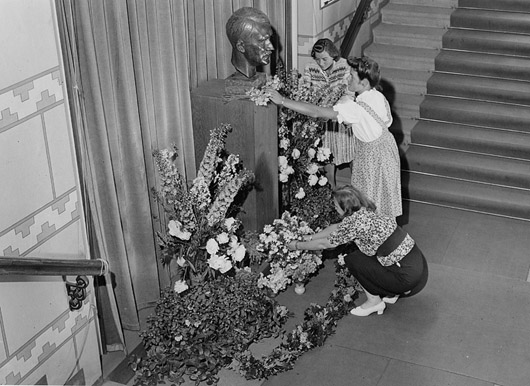


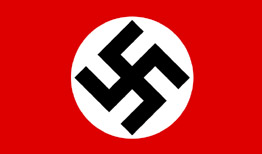
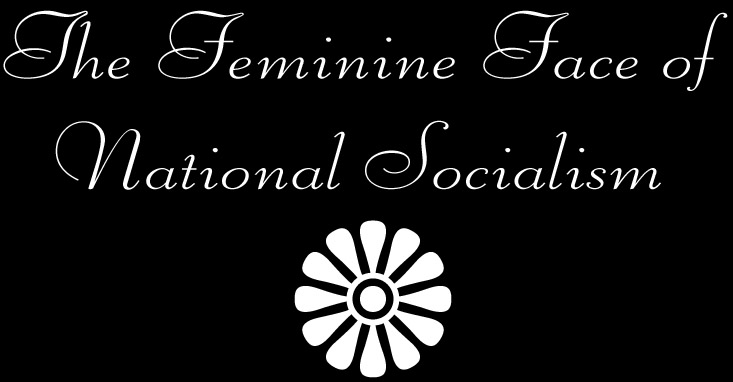
-Adolf Hitler, in a speech to the National Socialist Women's Congress in 1935

-Adolf Hitler
"…the holder of the Mother's Cross of Honor will in the future enjoy all types of privileges that we by nature have accustomed to our nation's honored comrades and our injured war veterans."
Click on the picture to see an award document, a letter notification of the award, and a diamond prototype.]

-Joseph Goebbels
'Women have been among the strongest pillars of Hitlerism from its very inception… At Nazi meetings the proportion of women in attendance is surprisingly large. '
He was right. Fifty percent of the National Socialist votes in 1932 came from women.
Instead of weighing the odds in a prudent and rational manner, they followed the dictates of their hearts and have stood by me, emotionally speaking, to this day.'
Ralf Dahrendorf described the National Socialists as 'radical innovators'. Sebastian Haffner declared that the emancipation of women 'made great leaps forward' during the Third Reich.
It was also said that the Third Reich was the greatest revolt against the established order in European history.

-Adolf Hitler, before the German Reichstag, September 1, 1939.
'Zum erstenmal in einem Betriebe Dem Aufruf des Führers folgten Tausende von Frauen, um ibre Krafte für die Kriegsarbeit einzusetzen.'
(For the first time in a factory thousands of women responded to the Führer's call to devote their energies to war work.)]
'Every family is in duty bound not to waste anything. So each German kitchen has a covered pail into which goes all garbage that can be served to pigs... what we in America call 'trash' must be carefully segregated into the following categories (1) newspapers, magazines, or other clean paper (2) rags (3) bottles (4) old metal (5) broken furniture or just about anything else that is thrown away. City collectors come around for this segregated trash at regular intervals.
']
'Frauen helfen siegen
Bilddokumente vom kriegseinsatz
Unserer fraunen und mütter'
=
'Women Help Win
Picture documents of the war effort
Our women and mothers']
(The general education of electro-assistants begins with a basic course of about nine months, during which the girls complete their academic knowledge in mathematics, physics, electro-technology, and in the technique of measurements).]
(The concepts learned are checked and deepened in the course of practical manipulations. Under the guidance of the teacher, small work groups even undertake experimental constructions).]
(During theoretical and school instruction, young girls learn to file, mill,
to weld and wind, and much more. During their later work, it is without difficulty
that they will be able to overcome small practical difficulties on their own. And it is not a bad thing if the young lady of the image below realizes herself that precise manual work is not so simple).]
(When a special area has been thoroughly studied in theory, the knowledge is completed by reviewing
the instruments and apparatus of the corresponding laboratory).]
(If the general education is finished, the specialized education begins, which leads straight to future work.
For example, the trainee assistant of the upper image performs measurements for the first time alone).]
(Many assistants have an experienced laboratory engineer as their "boss", who works with them
during important experiments).]
(In the course of the work in the laboratory it becomes clear how useful the practical training has been
useful. The assistant can easily build a measuring device).]

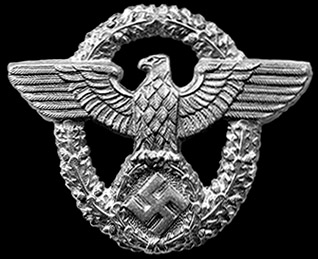

'Düsseldorf
20.6.36.-15
Rheinische Briefmarken
- Ausstellung
1936.'
(Düsseldorf
20.6.36.-15
Rhenish Stamps -
Exhibition
1936).]

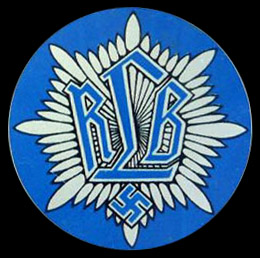
Nationale Ausstellung 1937'
(The German Stamp
National Exhibition 1937).]

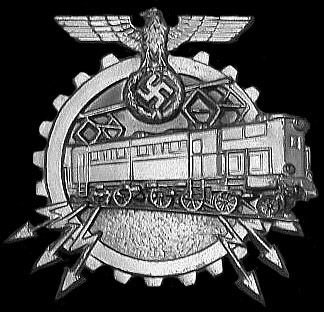

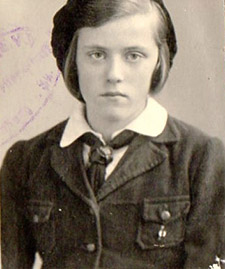
The header says: 'NS Reichs Organization for Physical Education']

(Healthy
Woman - Healthy People).
10 1/2 minutes, .MP4 format.]

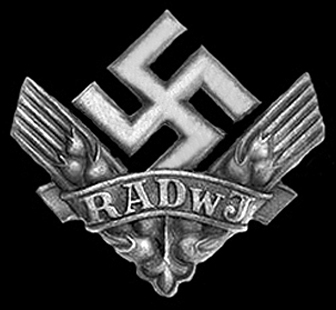

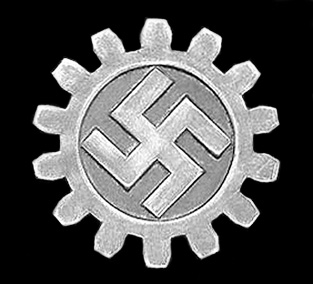

'Ich bin sozialist, weil es mir unverständlich erscheint,
eine maschine mit sorgfalt zu pflegen und zu behandeln, aber den edelsten vertreter der arbiet, den menschen selbst, verkommen zu lassen.
Adolf Hitler'
for and treat a machine with care, but to let the noblest
representative of the work, the human being himself, degenerate.)]


-NSV slogan
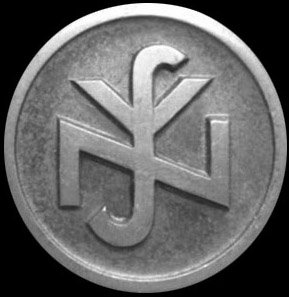

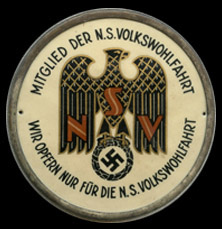

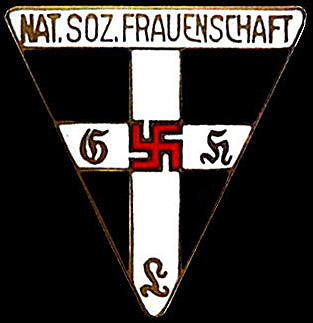

The titles of the pictures are:
'Kein Tag ohne Sonne', 'Jedem das Seine!',
'Backe - backe - Kuchen!', 'Das Brausebad' and 'Ziehet fest an!'
(No Day Without Sun, To Each His Own!, Bake - bake - Cake!, The Shower Bath and Pull Tight!)
The titles on the second page say:
'Guten Hunger!',
'Kein seltener Gast, der Onkel Doktor', 'Ruhe im Saal!' and
'Während die Kleinkinder des Kindergartens schlafen...'
(Good Hunger!, Not an Infrequent Guest, the Uncle Doctor,
Silence in the Hall! and While the Toddlers of the Kindergarten Sleep...)]
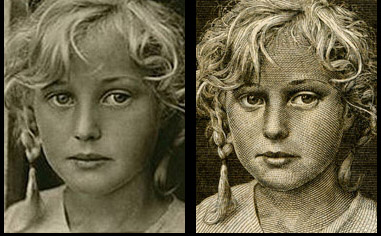

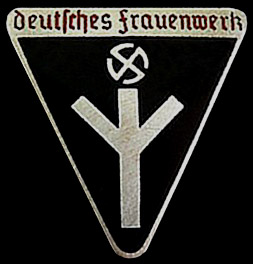

'Reichsmütterdienst im Deutschen Frauenwerk -
Muttertag 1935'
(Reich Mothers' Service in the German Women's Organization -
Mother's Day 1935).]

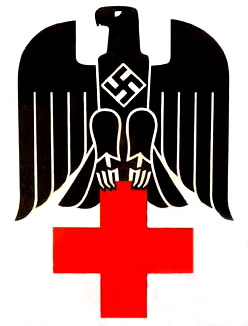
- Reich Minister of the Interior Wilhelm Frick, in a speech on June 11, 1933.


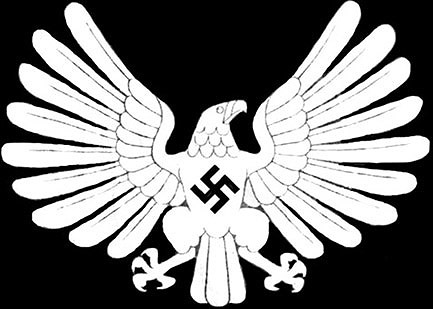

-Trude Mohr

-Dr. Jutta Rüdiger, leader of the League of German Girls, 1937
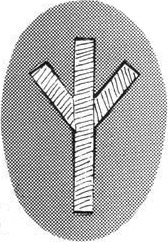


This unknown companion object has been a matter of speculation and years of debate. Some have believed it to be a semitransparent star or a black hole, but it is generally believed to be 'a binary star system surrounded by a massive, opaque disk of dust'.]






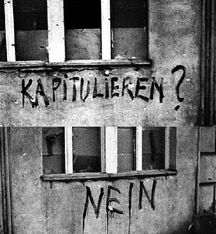
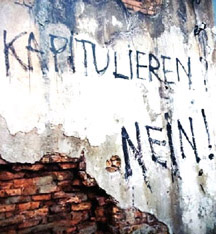

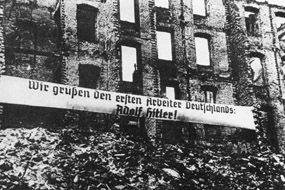
-Baldur von Schirach, speaking to BDM girls.
(German Bodies: Race and Representation After Hitler, page 47, by Uli Linke, 1999)
-Dr Jutta Rüdiger, leader of the League of German Girls, 1937.


-Eva Braun-Hitler, in the last days
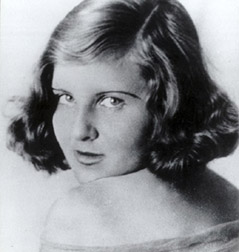
As savvy and intelligent as she was beautiful, she also held a rare combination of traits like iron loyalty and courage in the face of death.
A true golden soul, her life and energy shines through all of her photos.

-Sister Pia
In 1920, Sister Pia met Adolf Hitler on a train in Munich, there her life changed forever. She was instrumental in helping to form the National Socialist German Workers' Party. She was arrested many times in their struggle for German freedom, but proved to be relentless and unstoppable.
She gave many public speeches despite violent communist opposition and corrupt police. She was also active in various charitable events.
During Germany's twelve years of freedom (1933-1945) Sister Pia remained close to Adolf Hitler. She would even accompany him on picnics and remained close to him until the end.
She never stopped working for her people. In 1933 Heinrich Himmler appointed her Welfare Sister for the Waffen-SS at Dachau Concentration Camp.
In 1934 she founded the National Socialist Order of Sisters (Schwesternschaft), of which she became its honorary chairwomen in 1937.
During her service Sister Pia received many awards and medals for her tireless service to her people, among them were the Silver Medal for Bravery, the Silesian Eagle Order, and the Baltikum Cross.
After the war she spent five years in an Allied concentration camp, where she was beaten and abused. She was forced to appear before an Allied 'Denazification' kangarooo court in September 1949, where she was classified as a 'major criminal'. They sentenced her, now 64 years old, to ten years at Rebdorf forced labor camp and all of her personal property was confiscated (stolen).
As bold as she was dedicated, she once stated 'There is only one Frederick the Great, there is only one Adolf Hitler, and there is only one Sister Pia.'

-Magda Goebbels, (Guido Knopp, 'Hitler's Women')
-Magda described by Adolf Hitler's personal nurse, Erna Flegel.
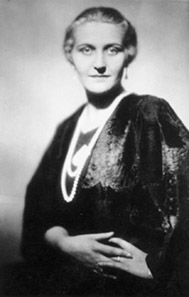
She was a firm supporter of Adolf Hitler and a prominent member of the National Socialist party.
Magda held the unofficial title 'First Mother of the Reich'. In a deep show of respect, Adolf Hitler gave her his Golden Party Badge just prior to his suicide.

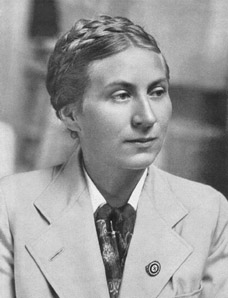

'…this was not an ex-Nazi. She remained as much a Nazi now as she had been in 1945 or 1933.'
Scholtz-Klink remembered:
'If you could have seen the women of Berlin defending their city with their lives against the Russians, then you would believe how deeply German women loved our Führer.'
'The National Socialist movement sees the man and the woman as equal bearers of Germany's future.
It asks, however, for more than in the past: that each should first completely accomplish the tasks that are appropriate to his or her nature.'

– Florentine Rost van Tonningen

This picture shows her in the glow of Adolf Hitler, whose back is facing the camera.]


Among those present in the picture are Joseph Goebbels, Konstantin von Neurath, the Italian consul Dino Alfieri, Eugen von Schobert, Heinrich Himmler, Martin Bormann and many others. This series of photos was taken by Heinrich Hoffmann.
Click on the image to see related images from this occasion.]
Click the image to see more of Gerdy's works.]




- George Orwell
'I am a National Socialist to the grave.'
A portrait of Adolf Hitler hangs on her bedroom wall in her apartment. As a child there was a portrait of the Führer on her wall in Berlin as bombs fell all around them. Vera says in the interview:
'When the bombs fell over the apartment it was the Führer that held up the wall so that they passed over us. With him on the wall I feel safe.'
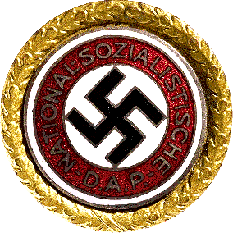


Once they are over, he laughingly explained, the men scatter into the nearby cafés, and the effect of the speech grows blurred;
but if the wife is there and immediately takes her husband home, the meeting is recreated between the two of them. It doesn't take flight; it becomes anchored!
Thus, for Hitler, women were not just the grace, the wonder, the gift of beauty of the gods; they were the foundation of National Socialism in family life.
The mother inculcated the faith. The daughter gave it drive. The illumination they had experienced made them radiant transmitters of the most effective propaganda.
Women, who had been shunted aside from politics up to then, would quickly become an essential element of National Socialism,
giving it a quality of romanticism, so important to German sensibilities, and an expansive force more mysterious and much more subtle and lasting than that given by men.
This understanding on Hitler's part of the feminine genius was also something new in the Germany of 1921.
Millions of women year after year would gather in masses behind Hitler with their passion, their gifts, their bewitching and infectious dynamism.
They would be the first feminine shock force in the modern political world. Hitler, in espousing Germany, his only true love, has espoused all of them.'
-Léon Degrelle, Hitler Democrat, (c)2012 The Barnes Review, page 161
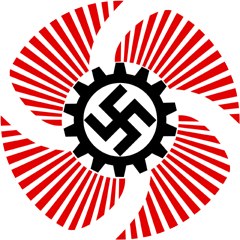

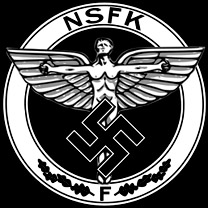
'We were fully accepted and nobody tried to stop us in any way.'

-Adolf Hitler speaking to Hanna Reitsch in the final days.
Hanna was the first woman to fly a jet and a helicopter.
She set over 40 records of endurance and altitude, some records still stand today!
She was awarded the Iron Cross 1st Class and Luftwaffe Combined Pilots-Observation Badge in Gold with Diamonds.
-Hanna Reitsch, in a 1970s interview with Ron Laytner
-Hanna Reitsch
-Hanna Reitsch



[Marie-Luise Müller-Maar, from her unpublished autobiography 'Mein Fliegerleben im Telegrammstil', page 10]

-Liesel Bach
-Liesel Bach



